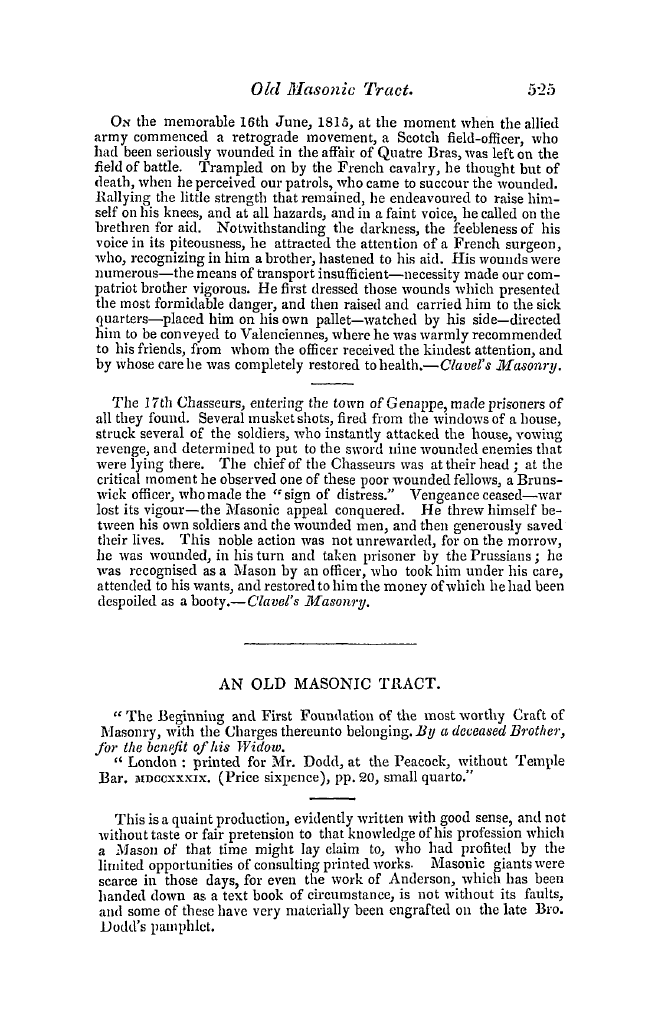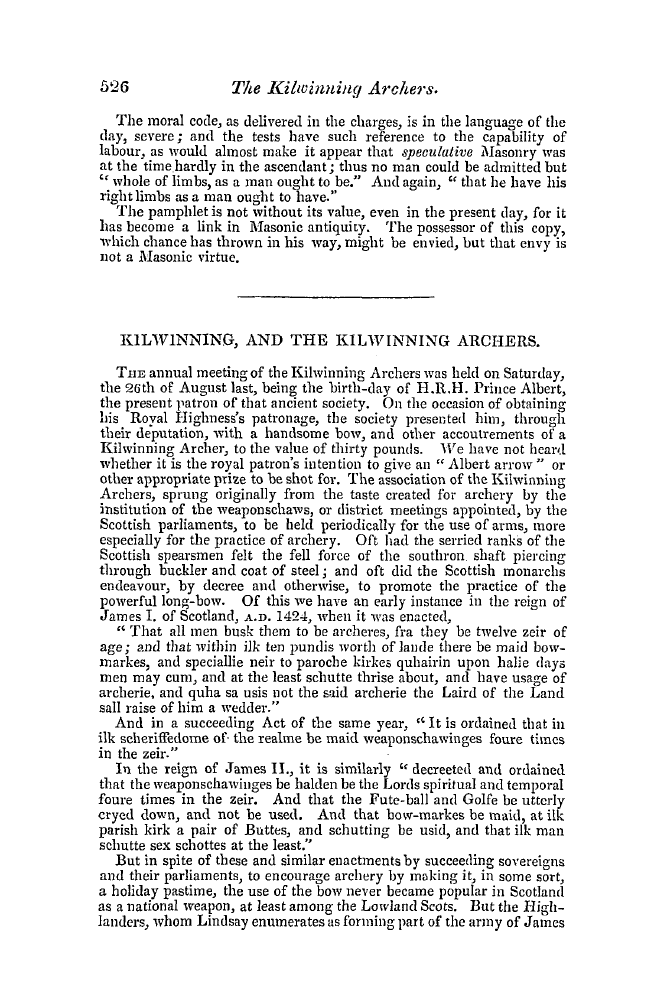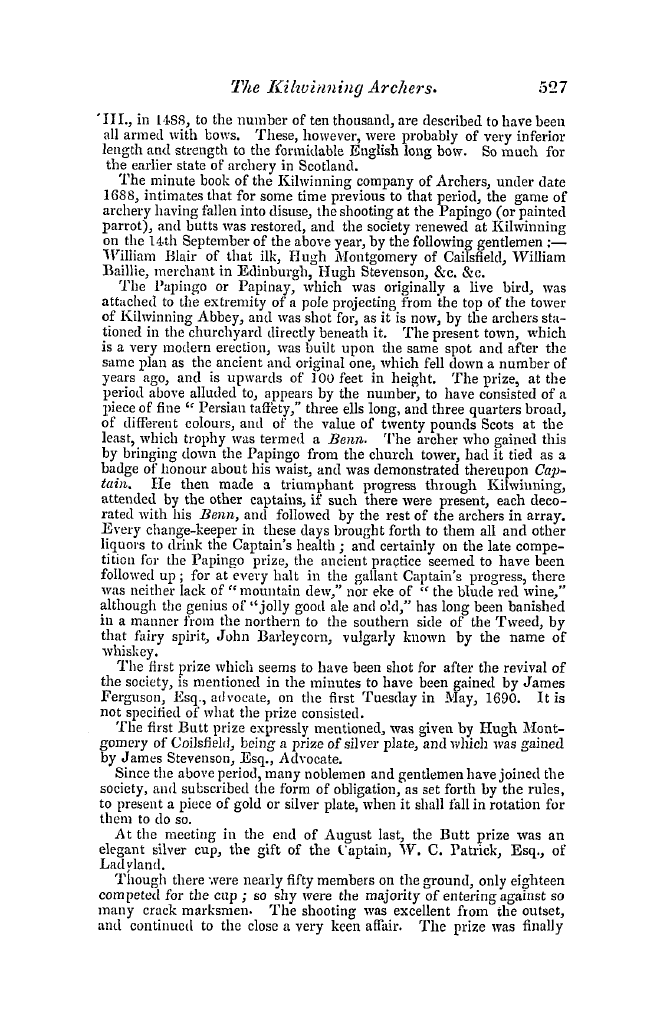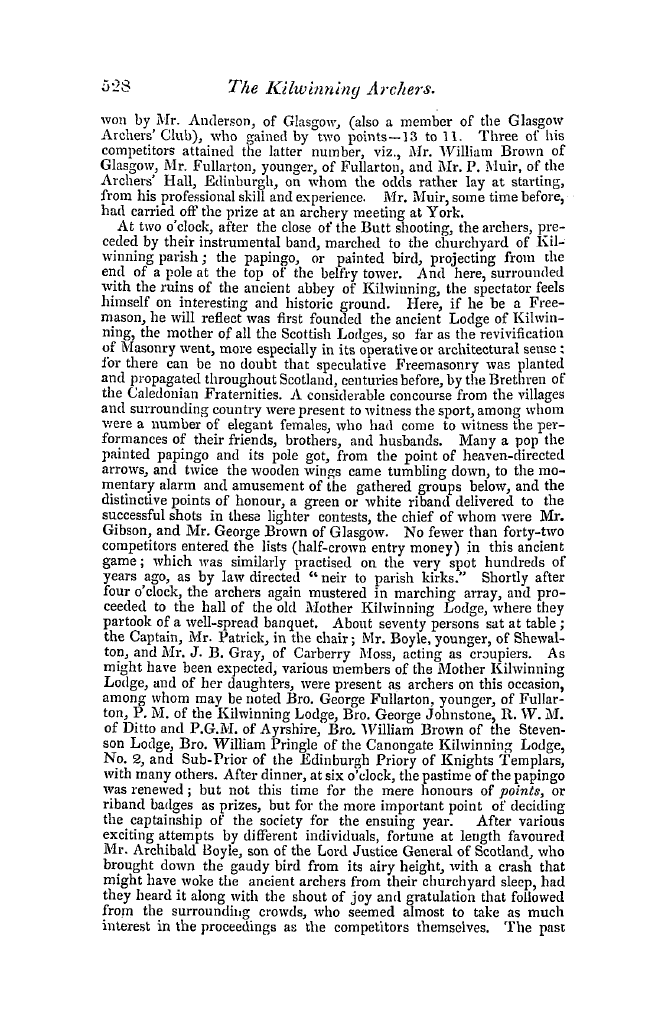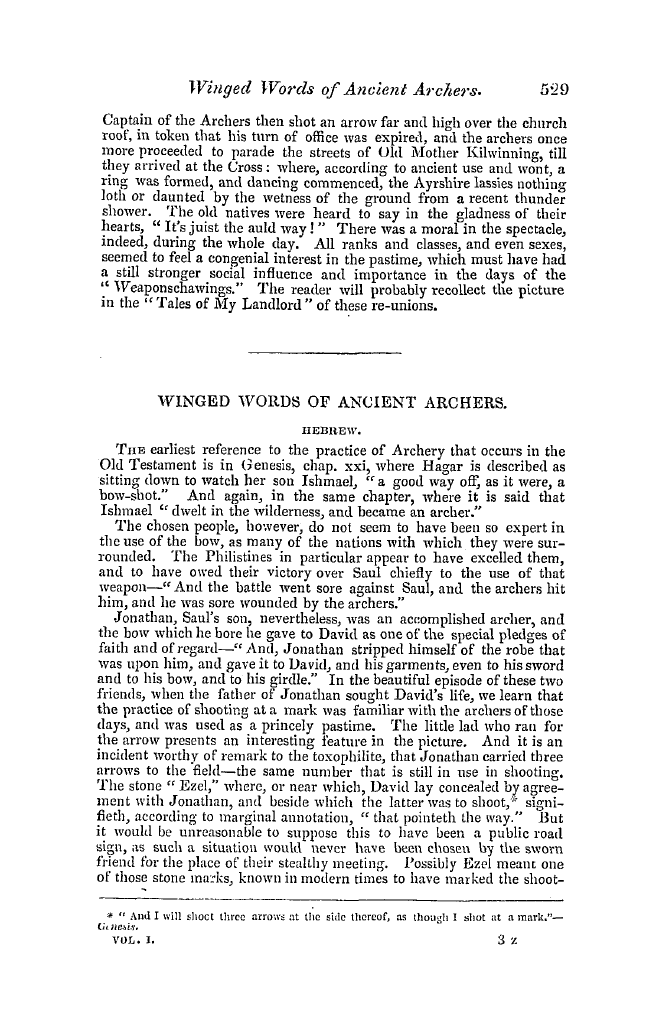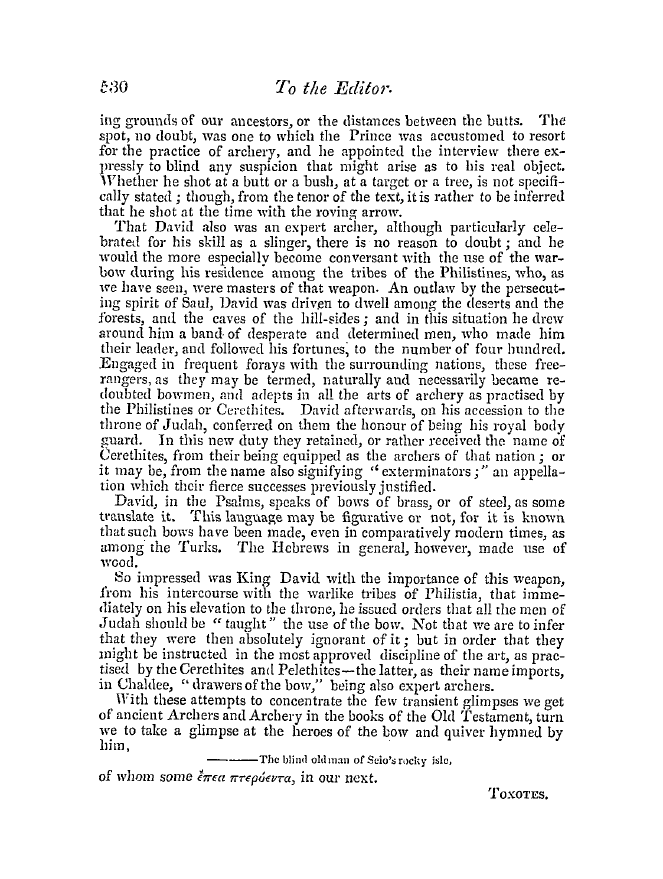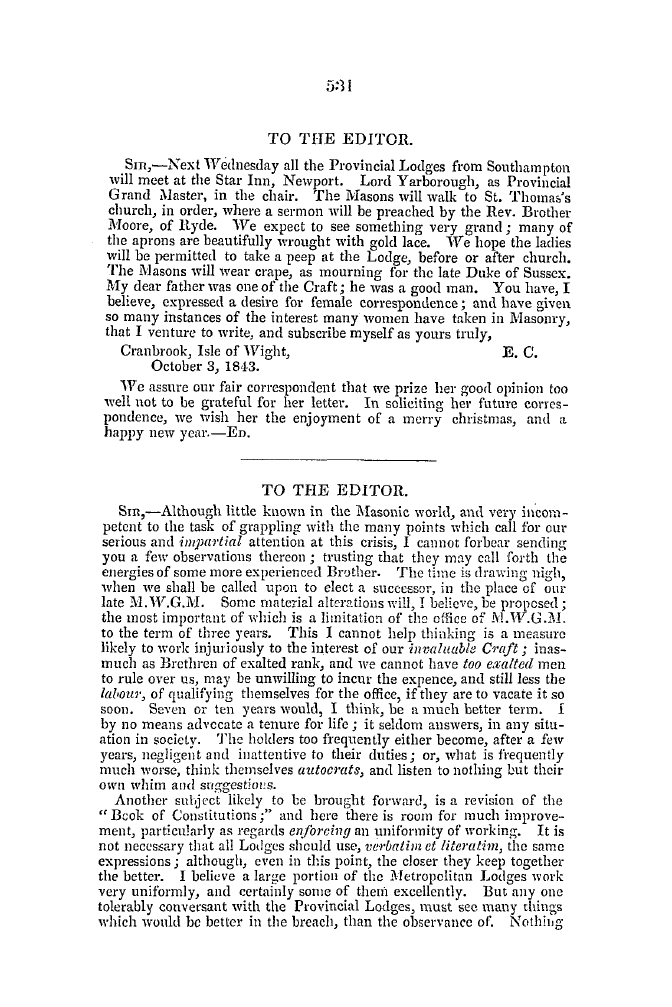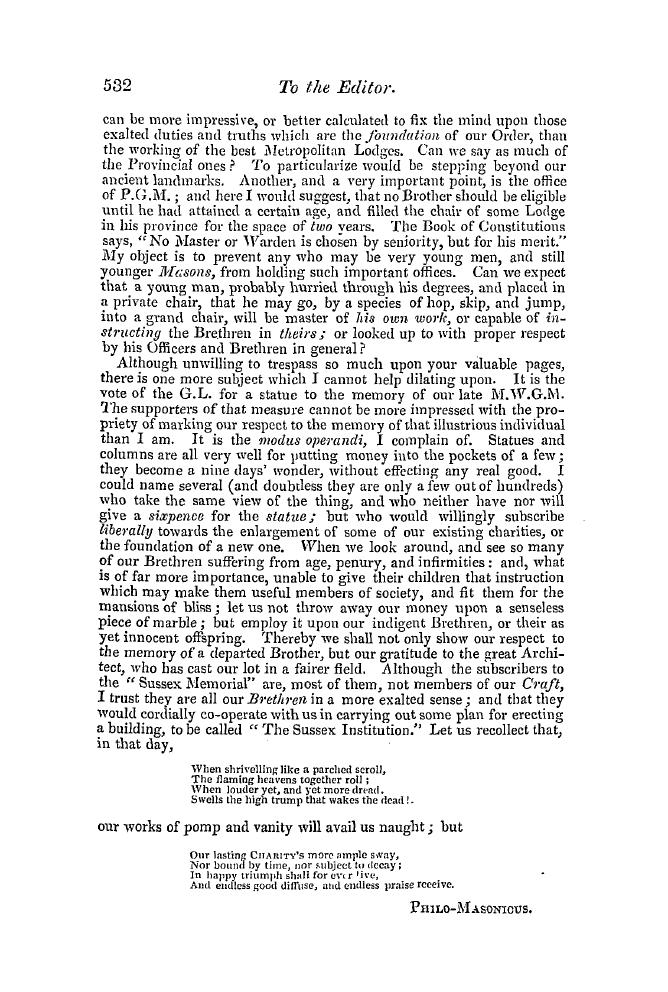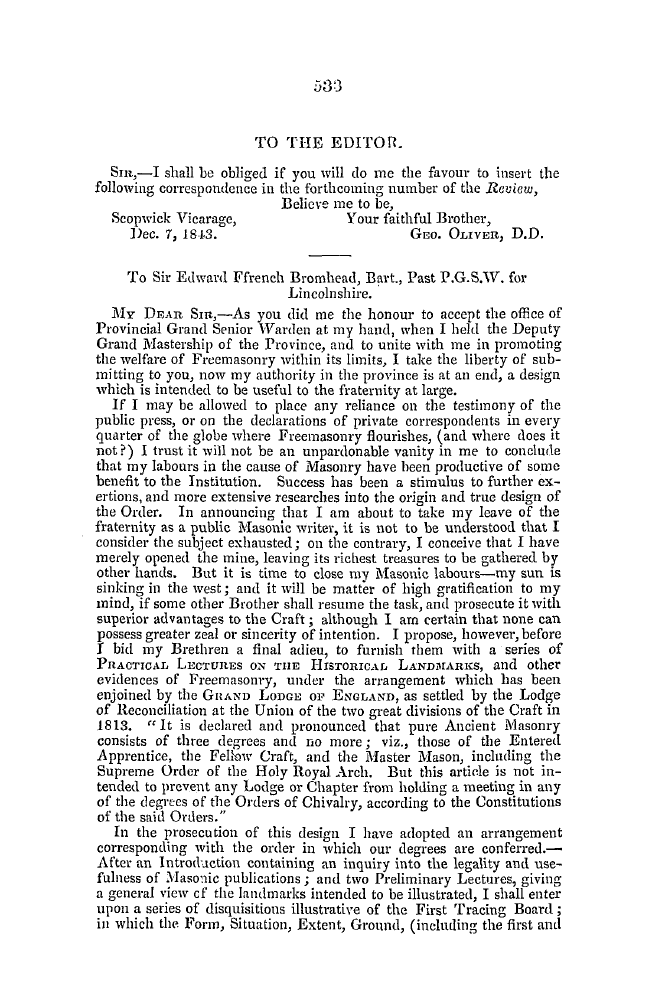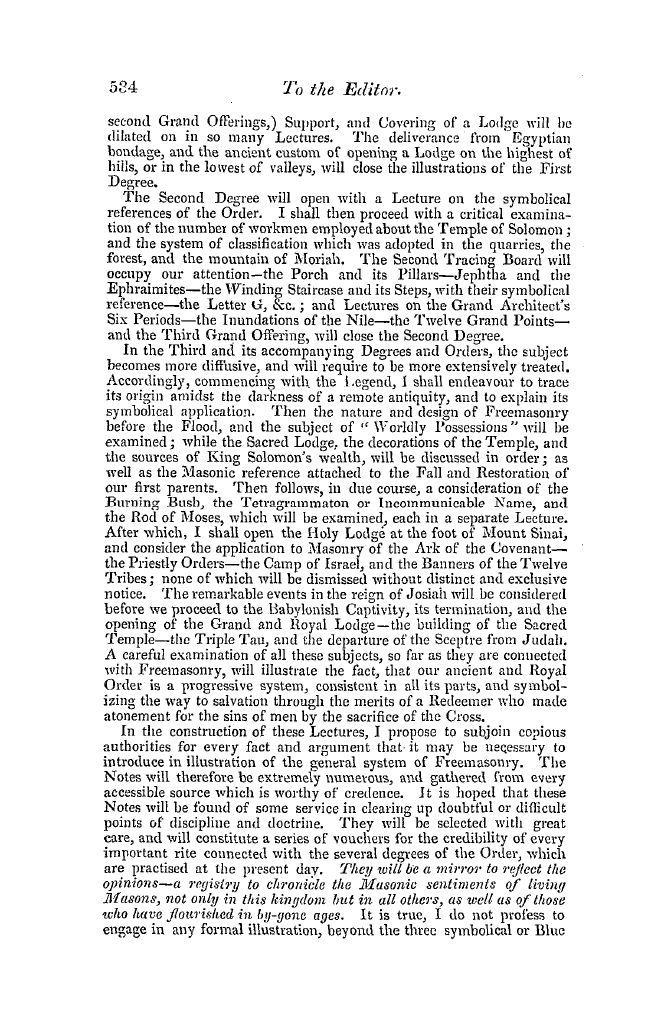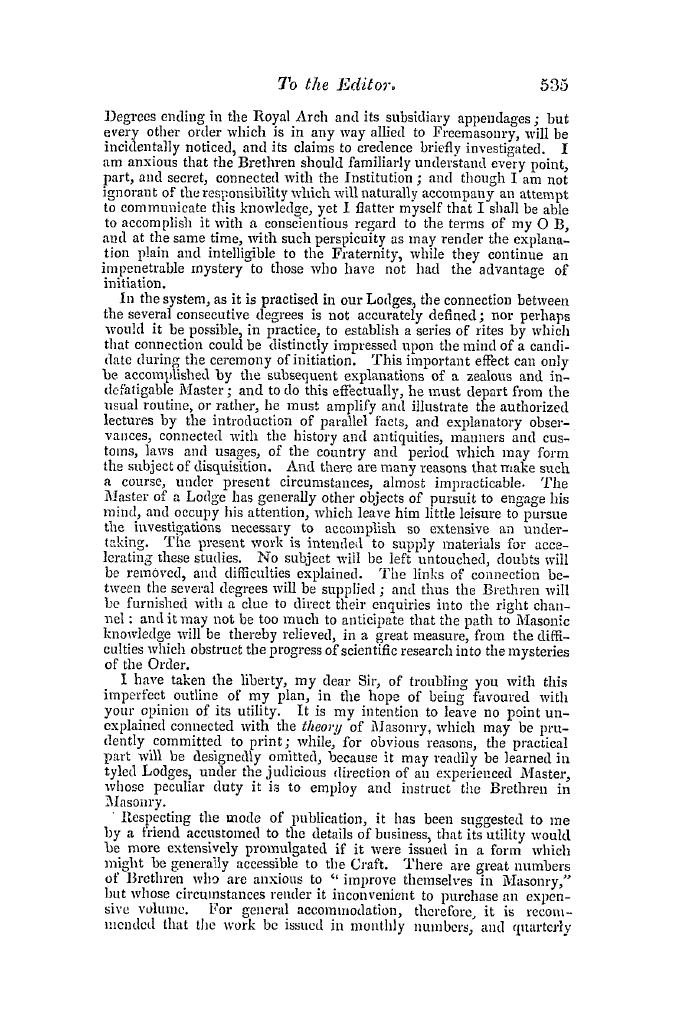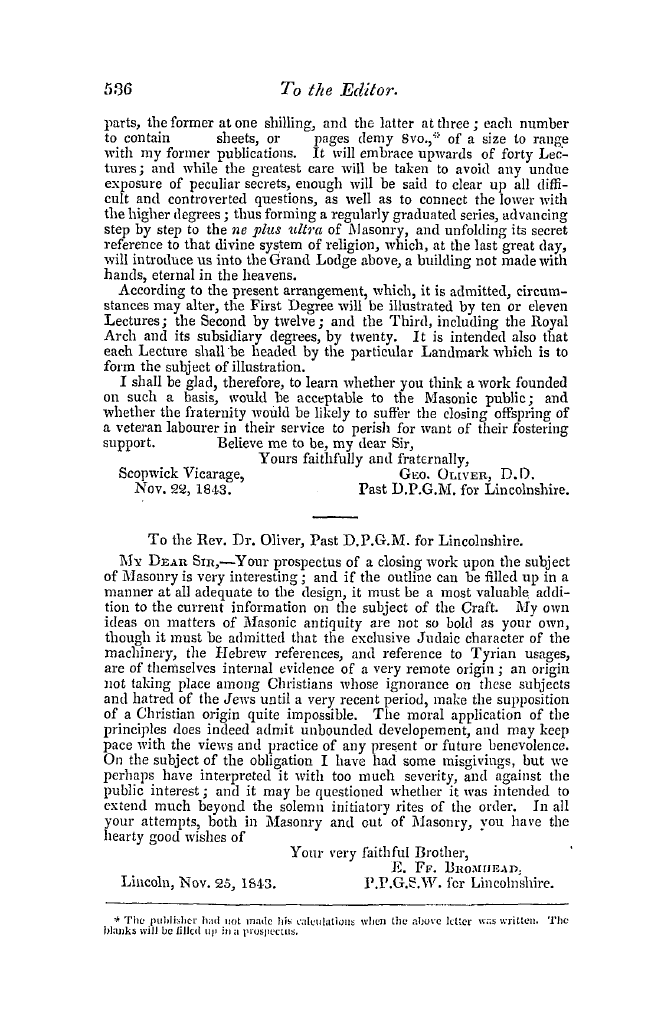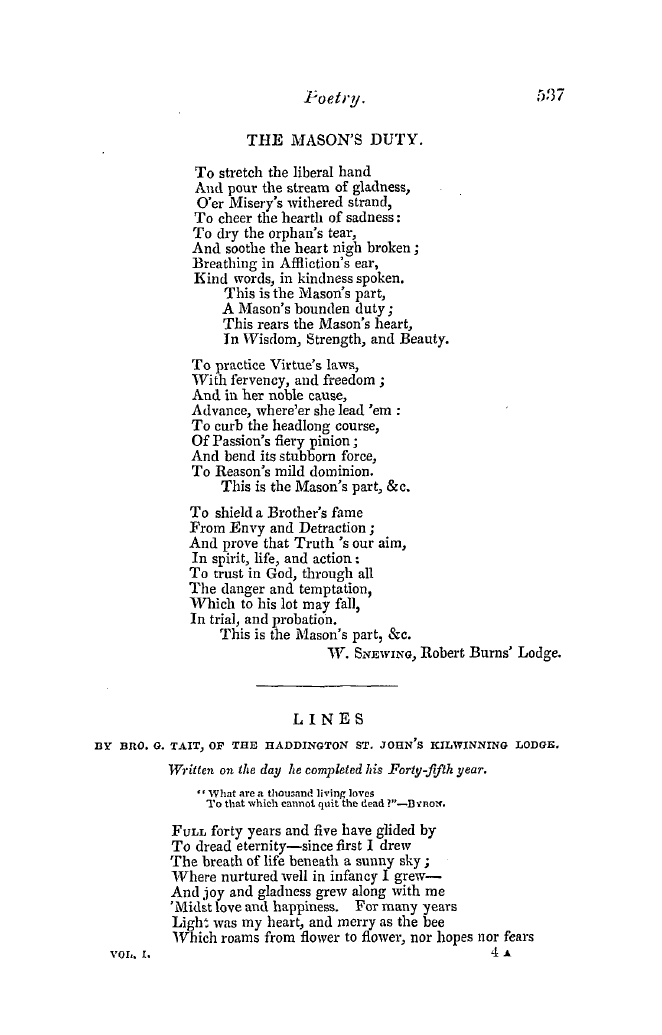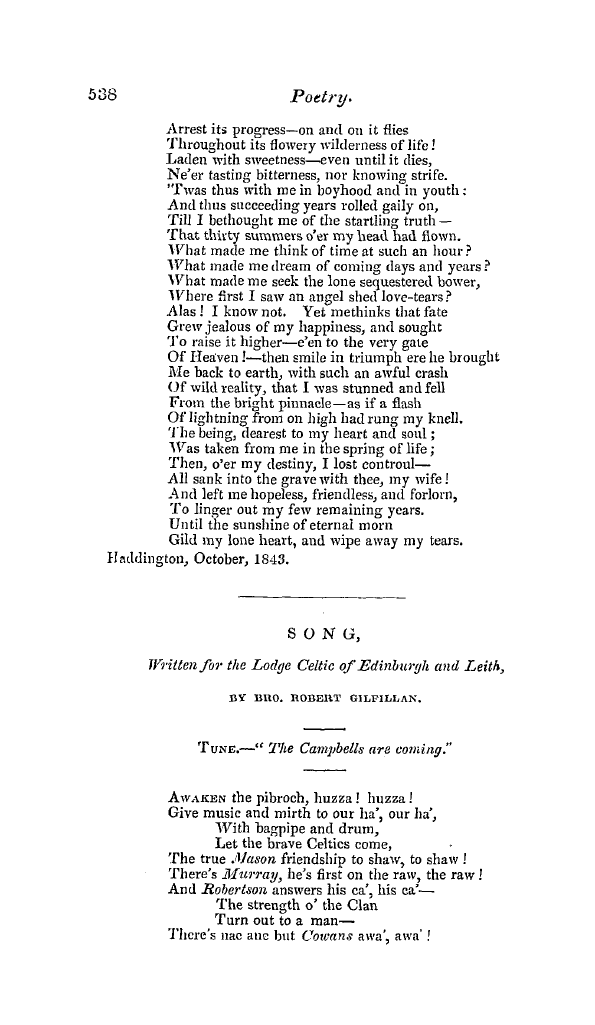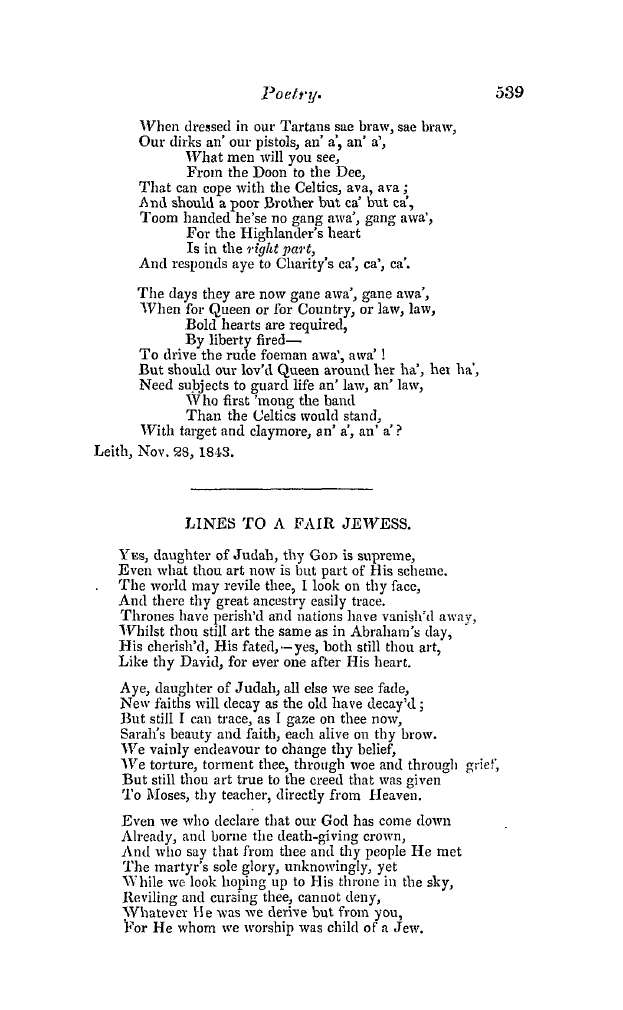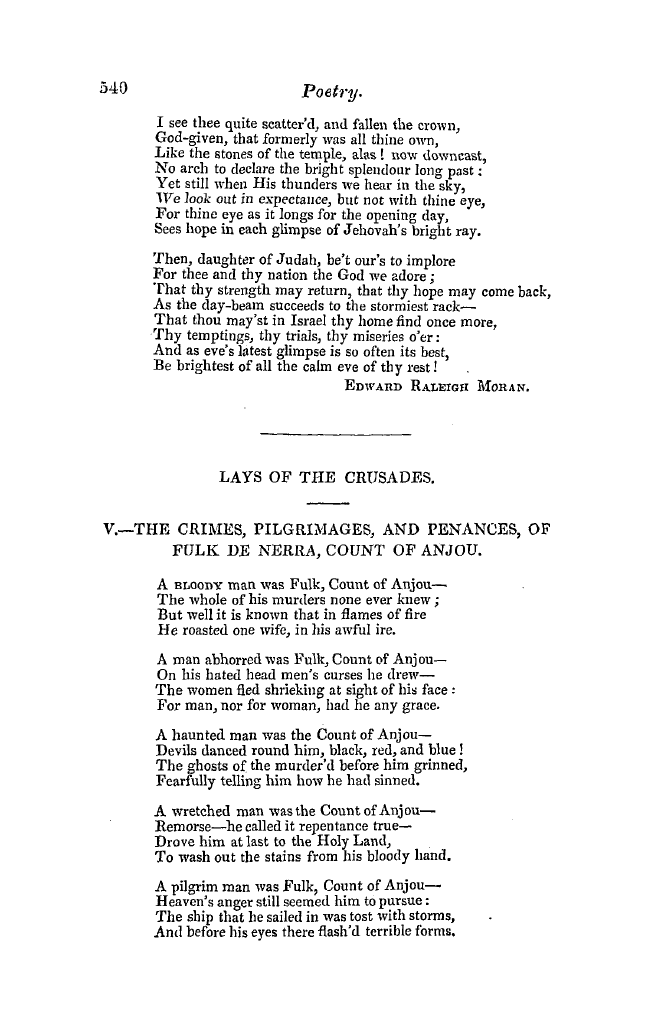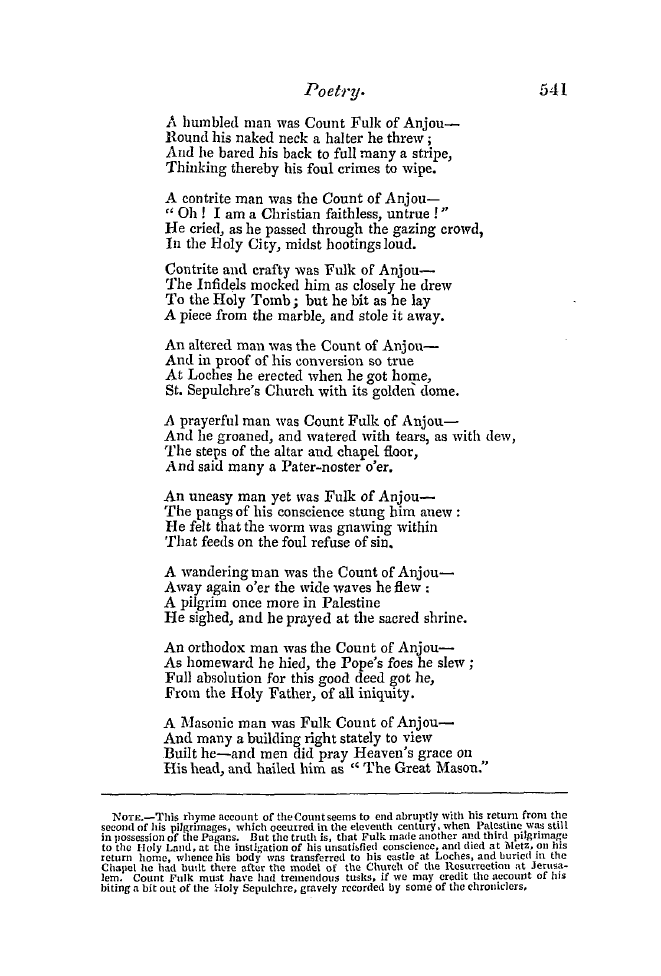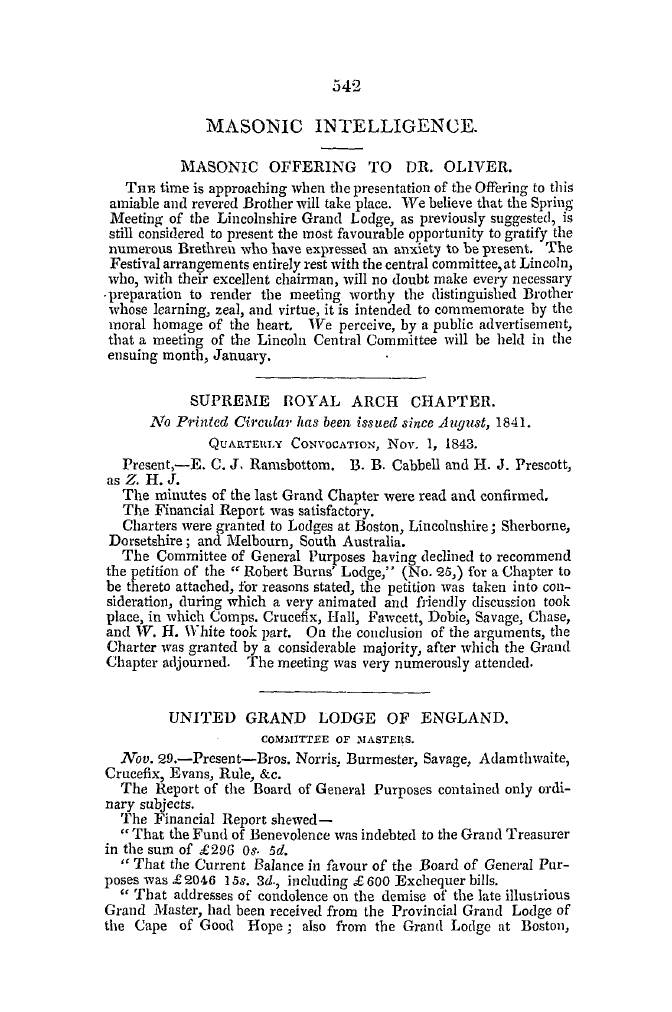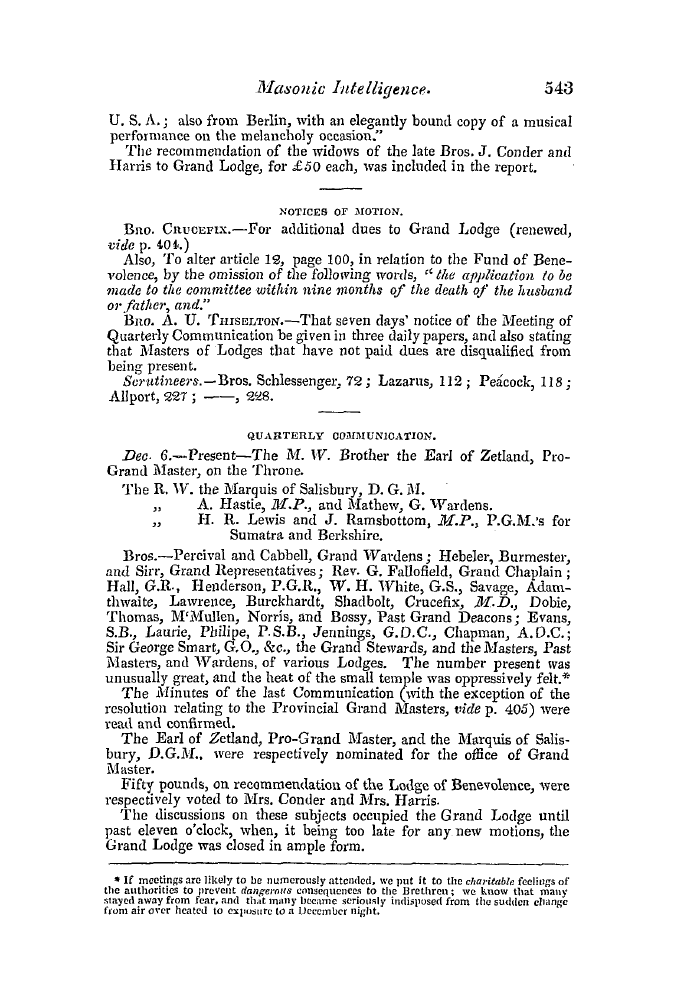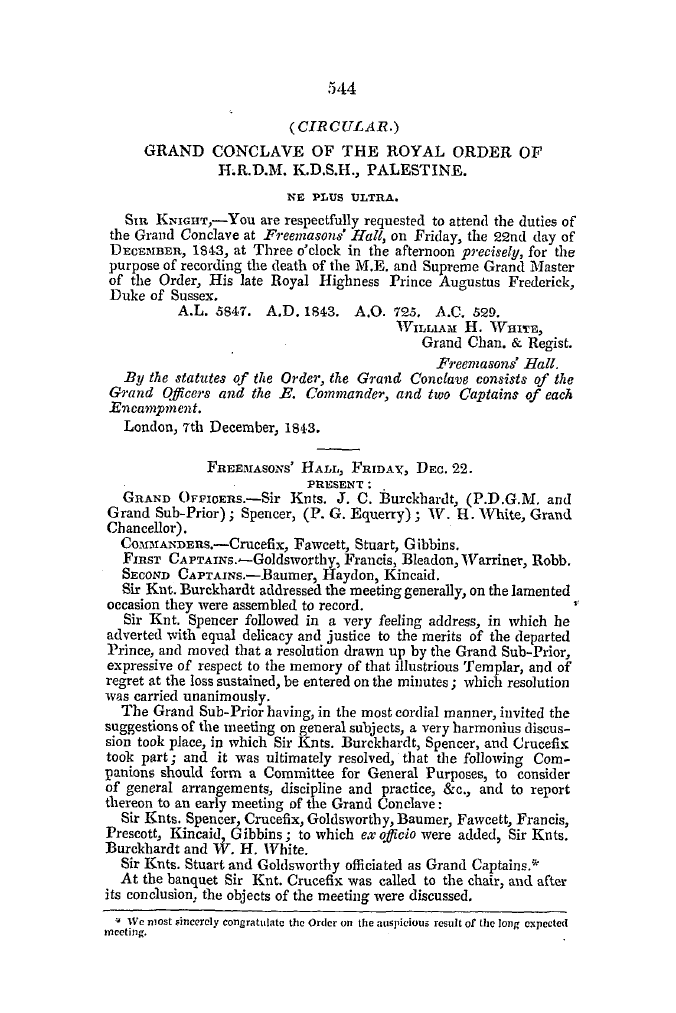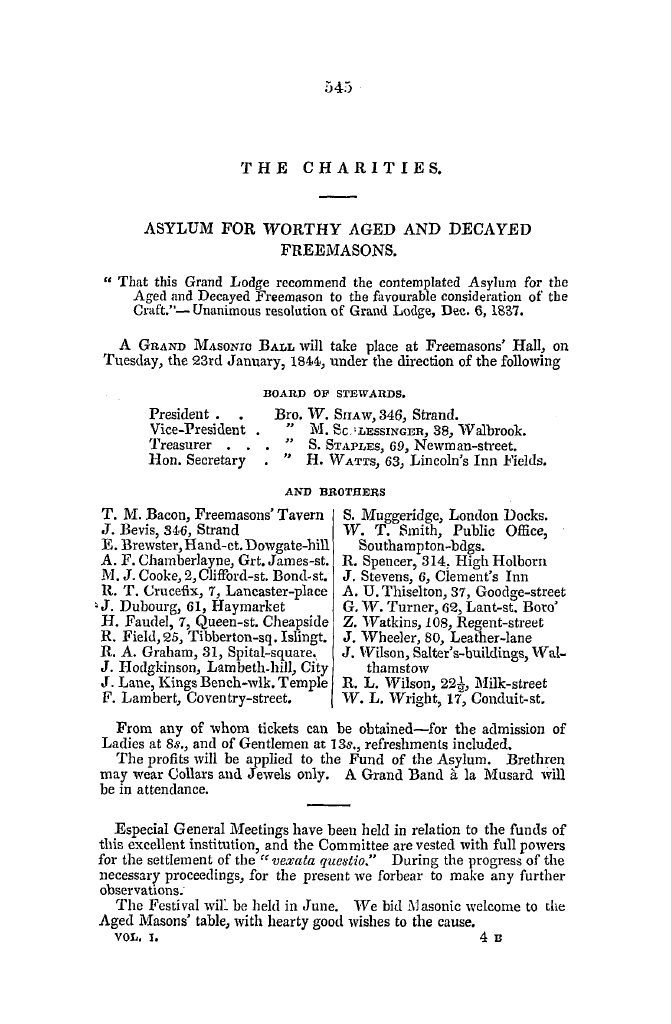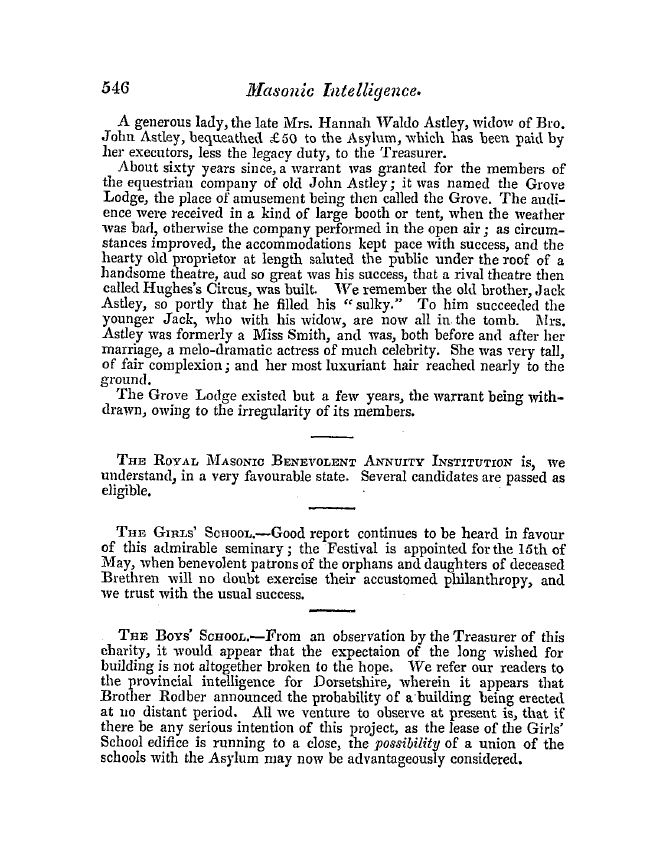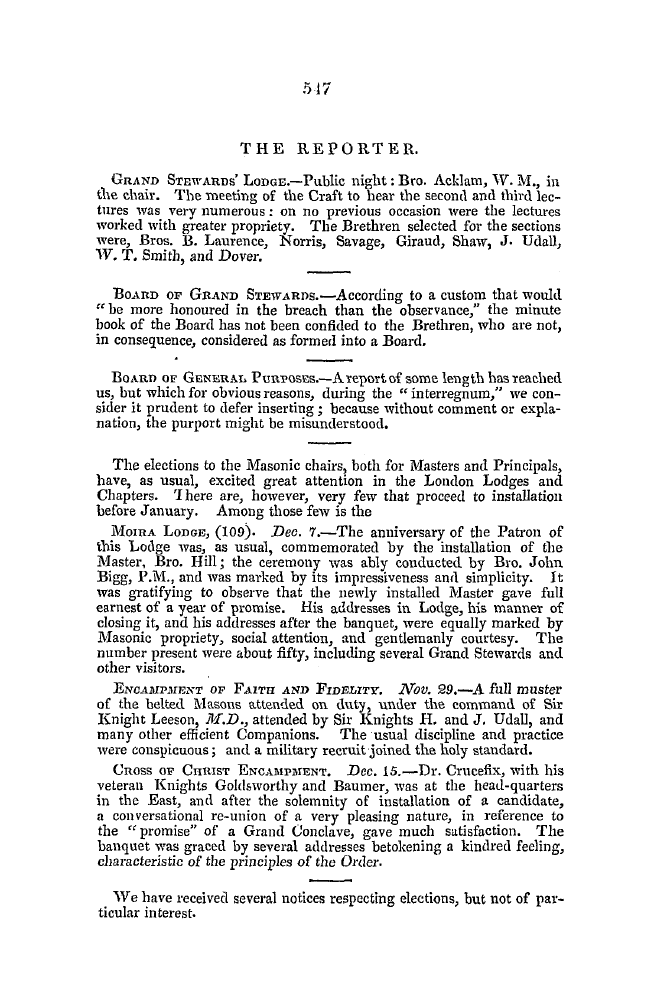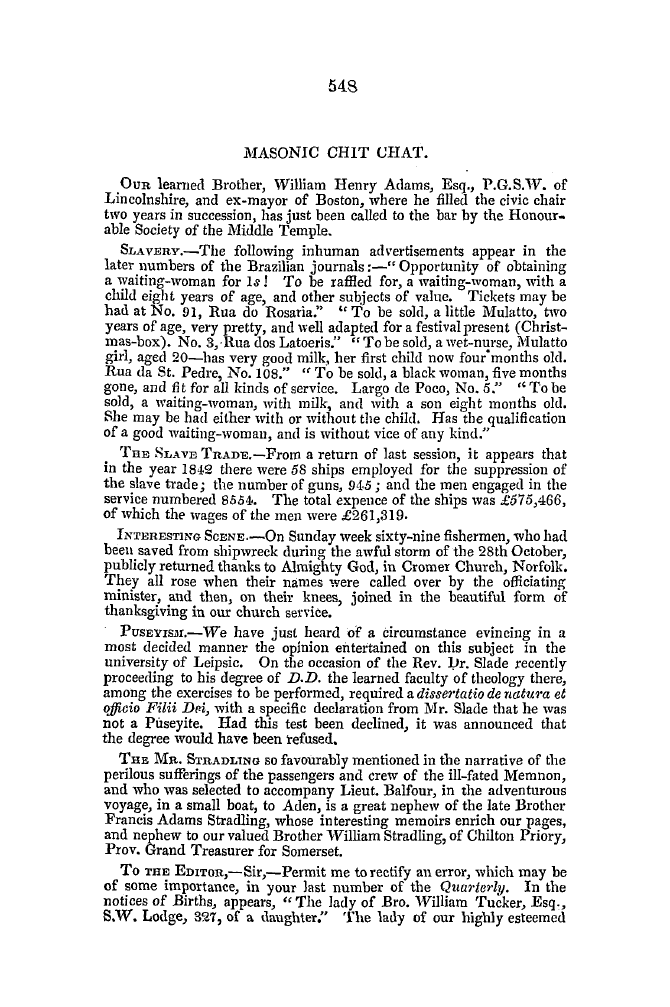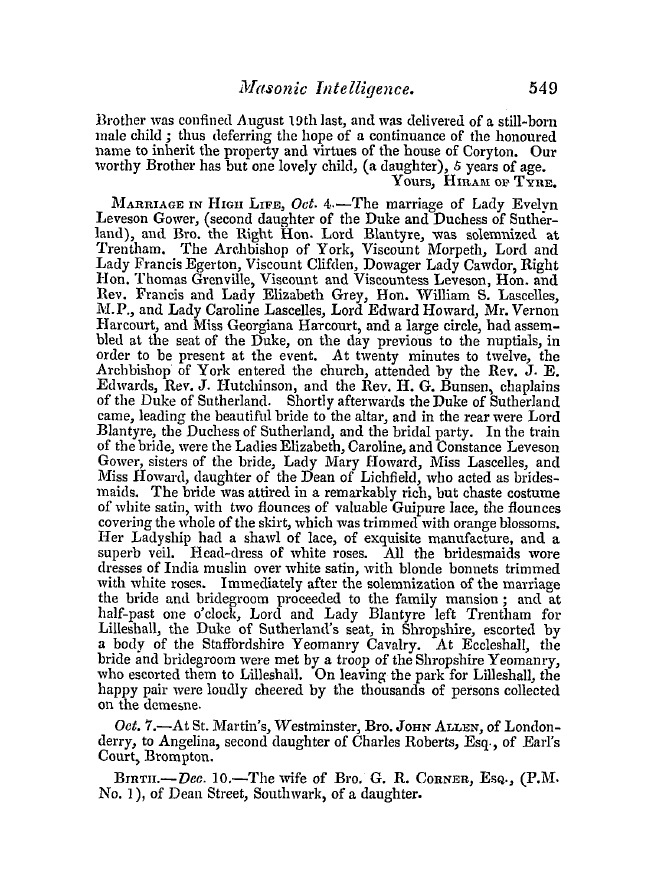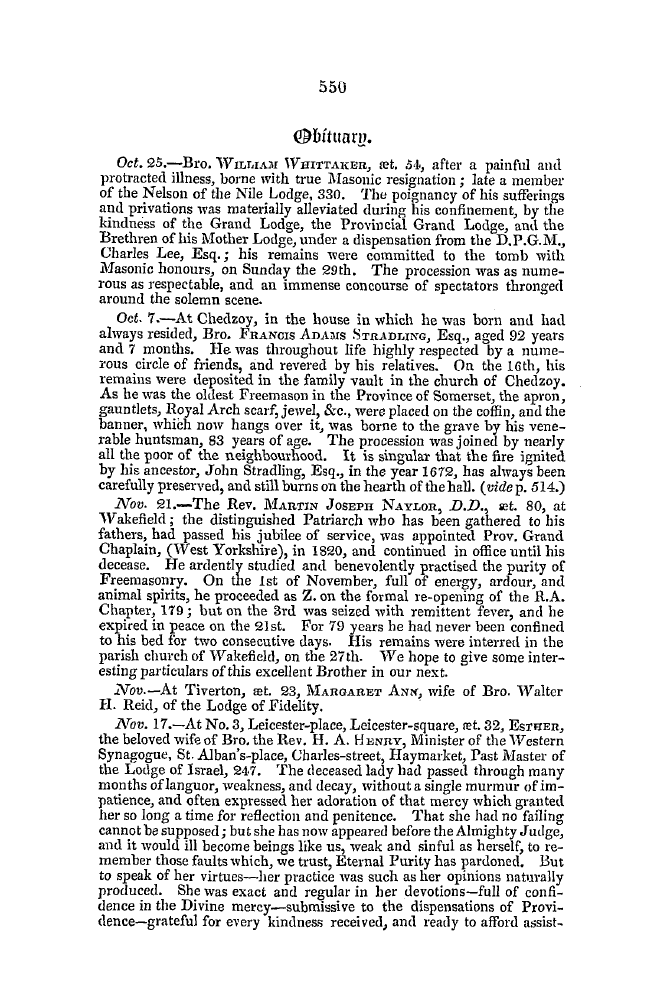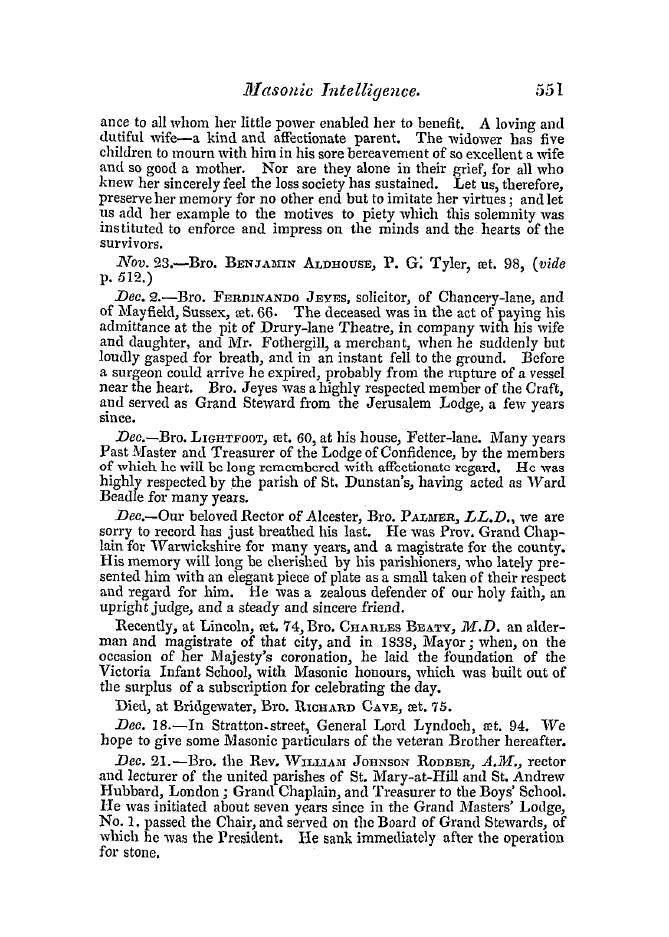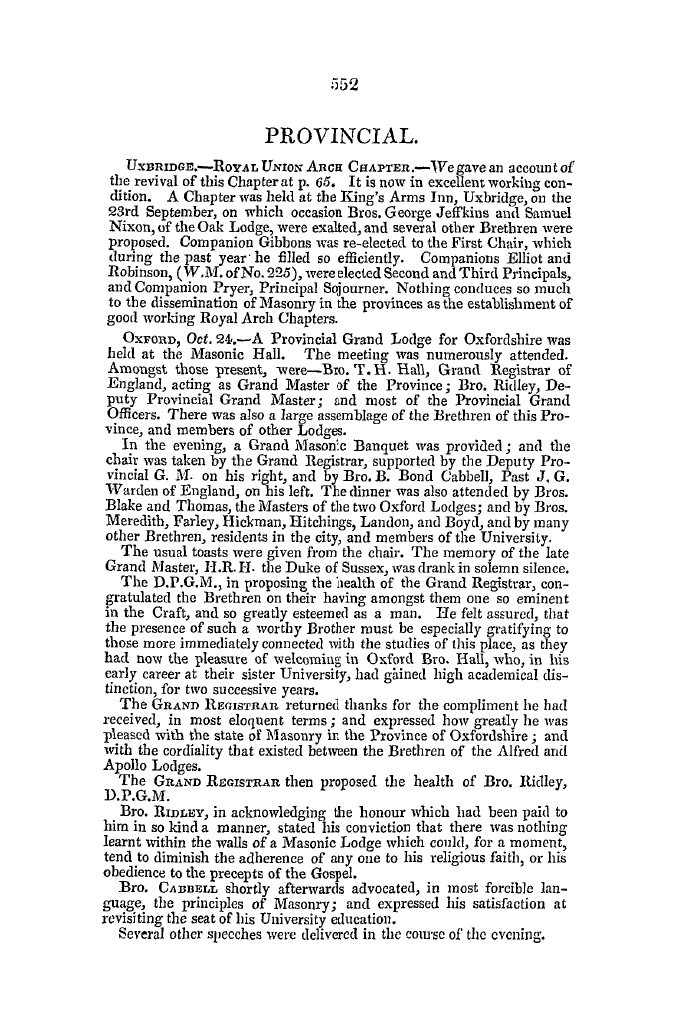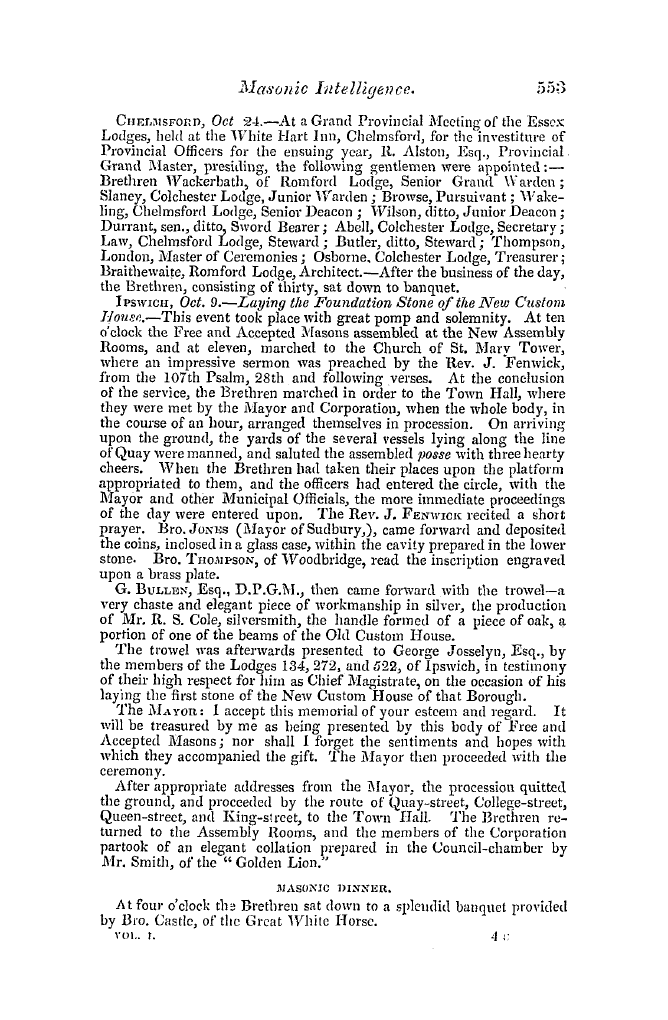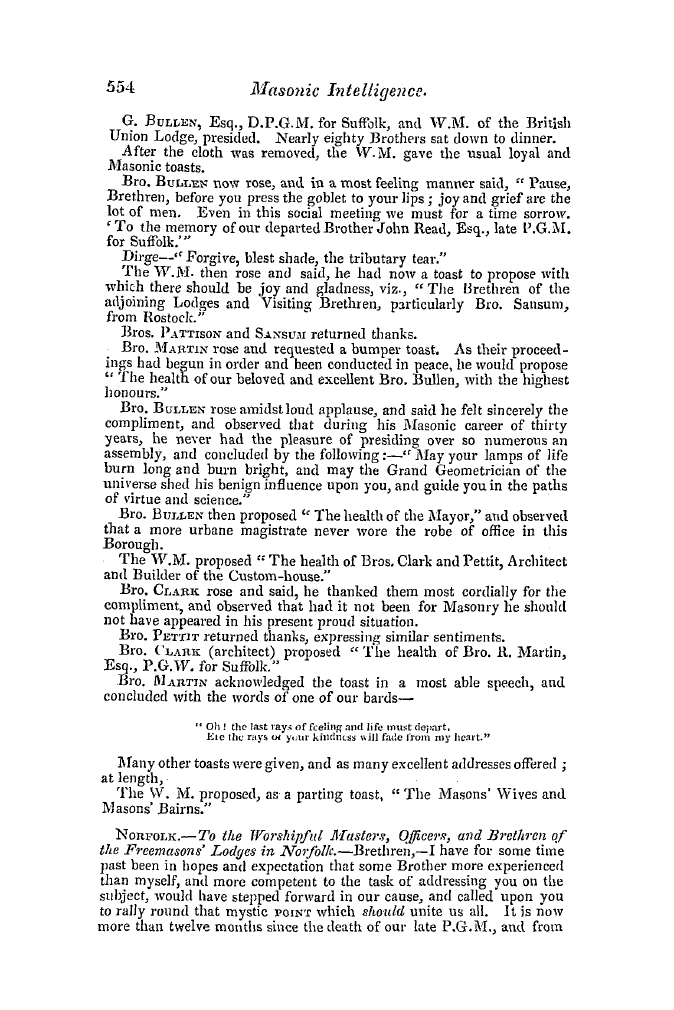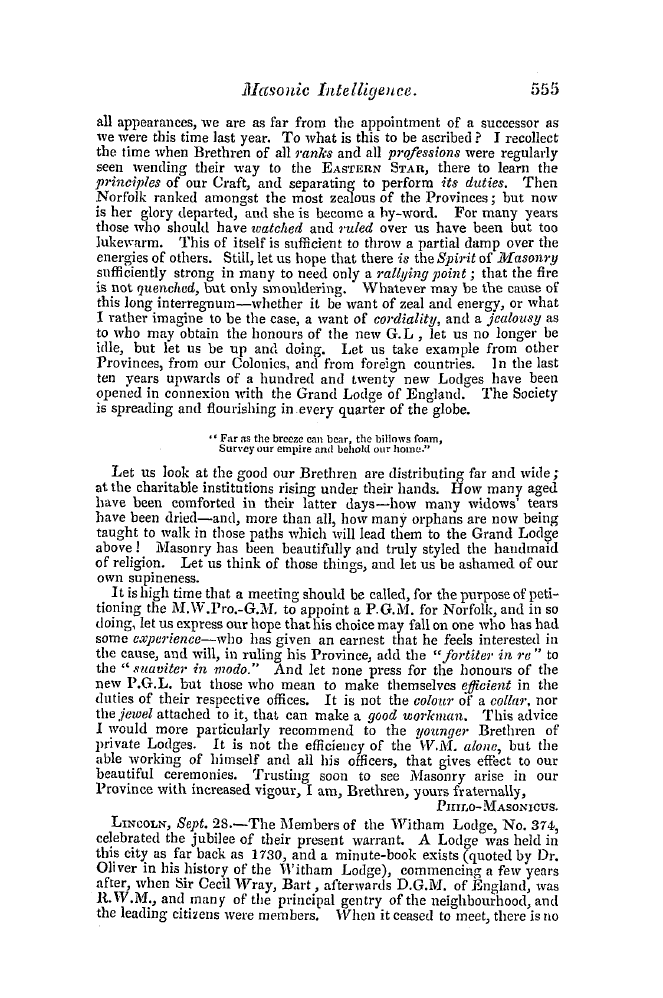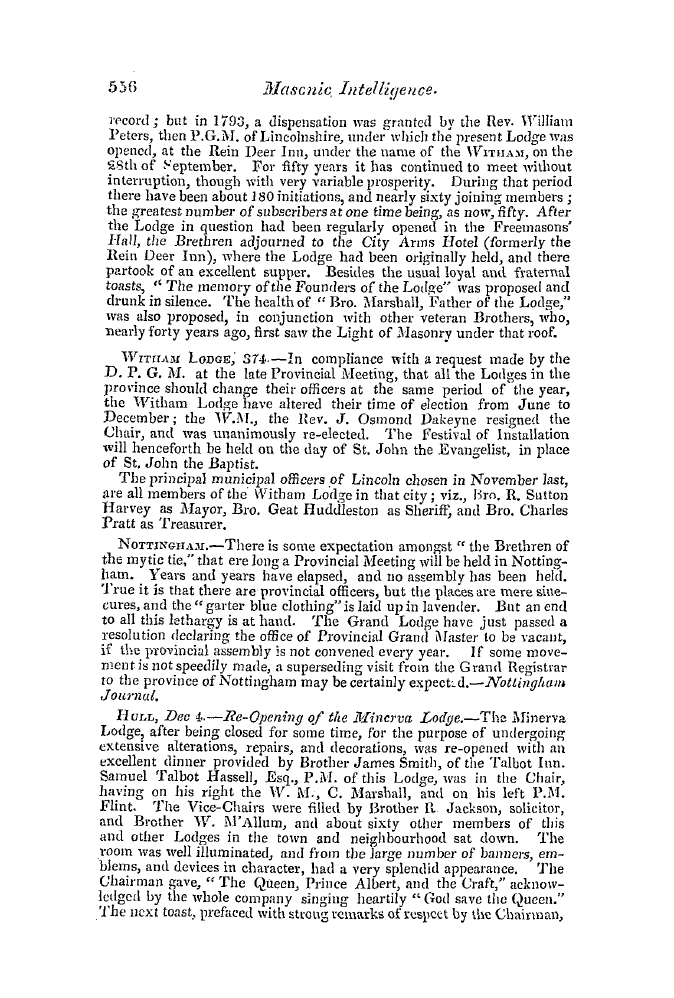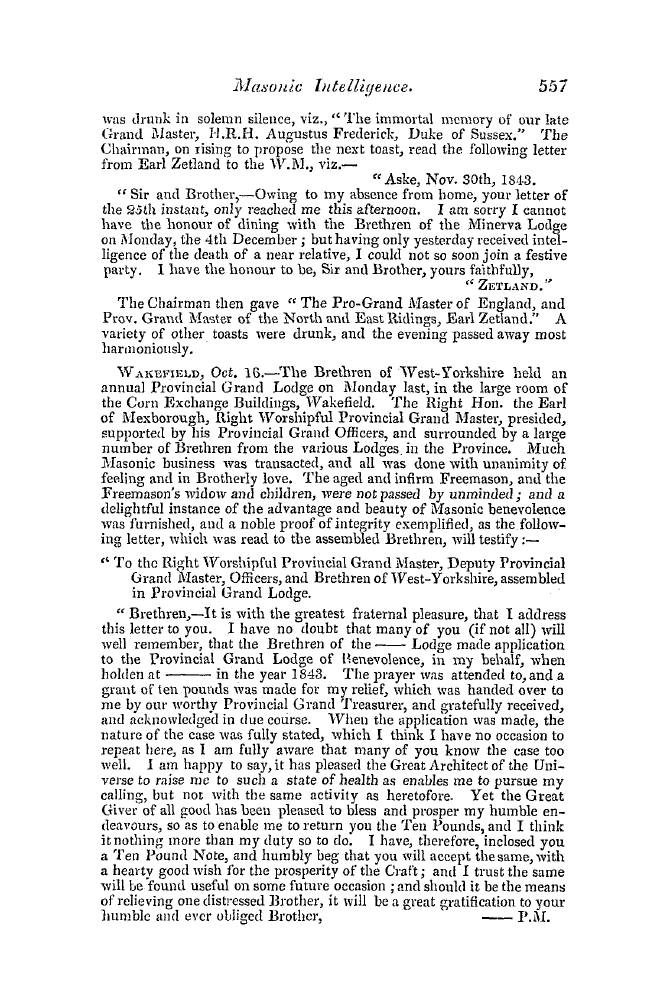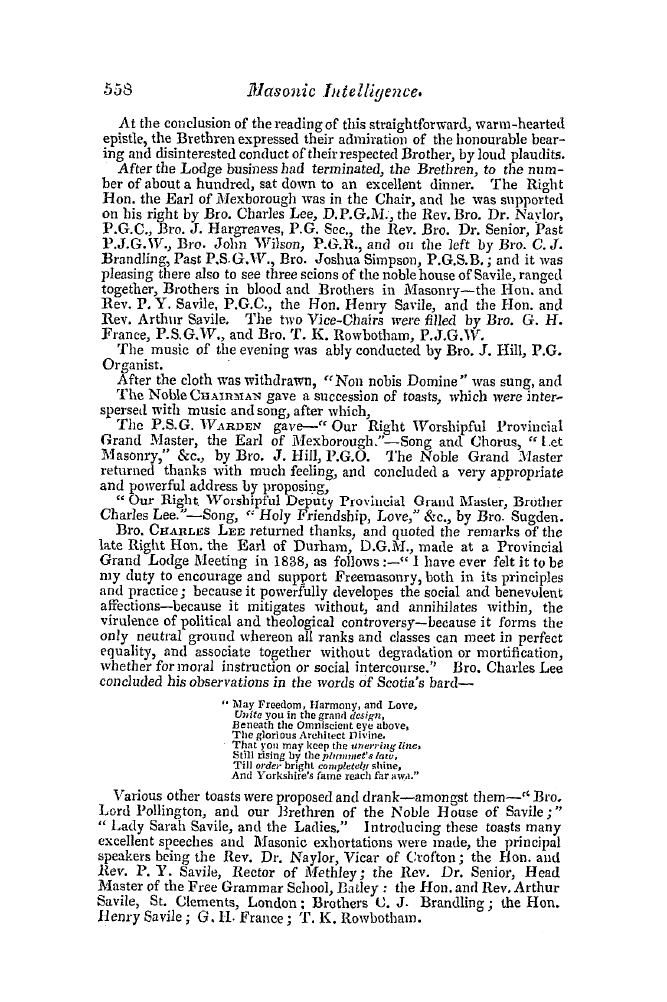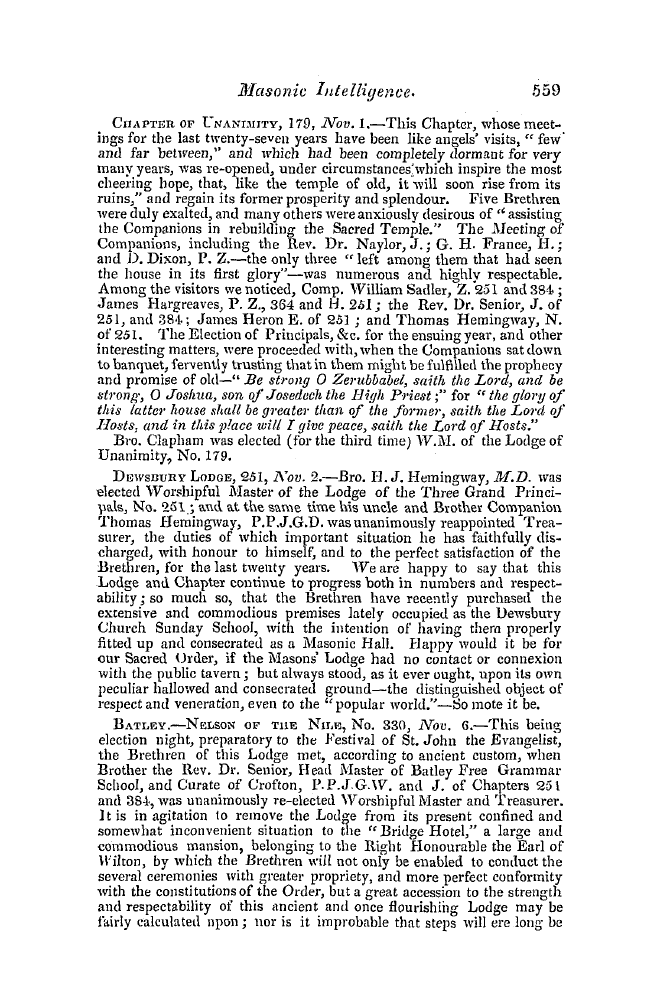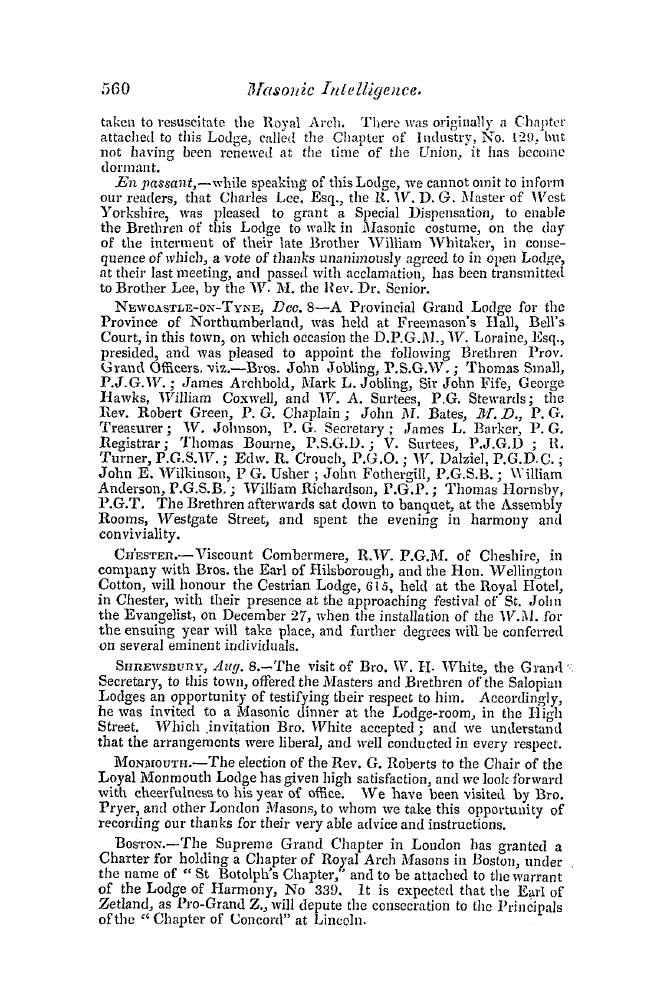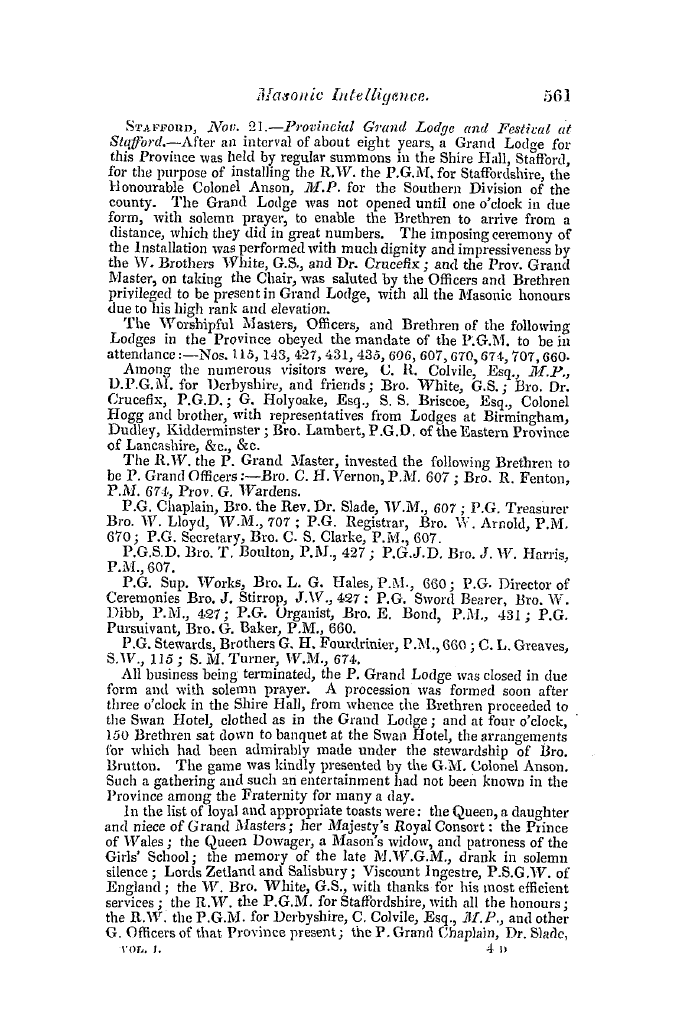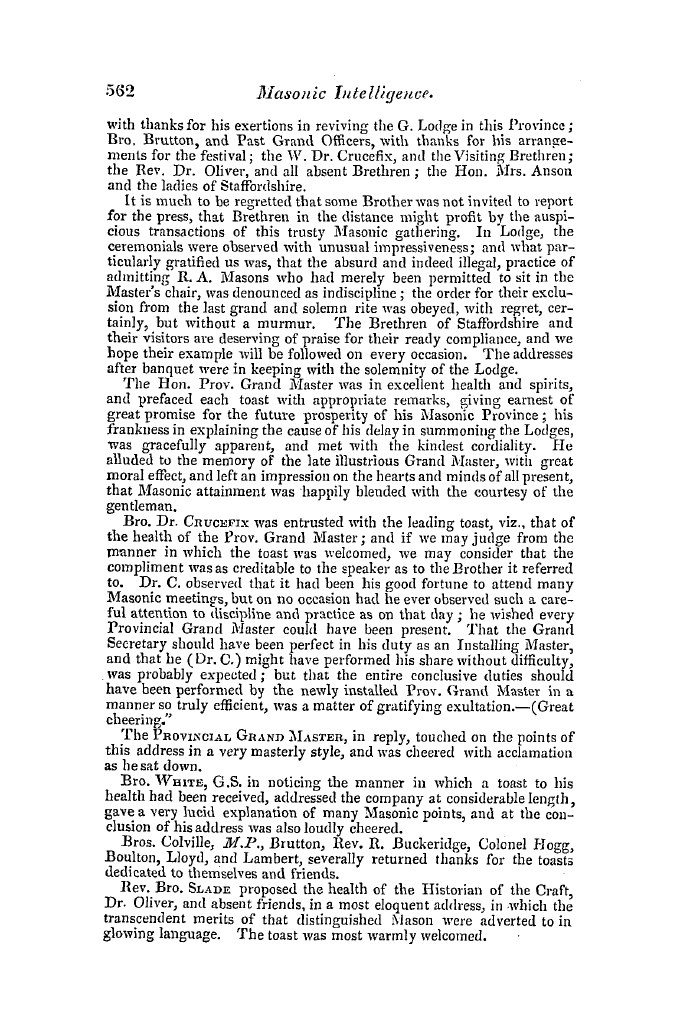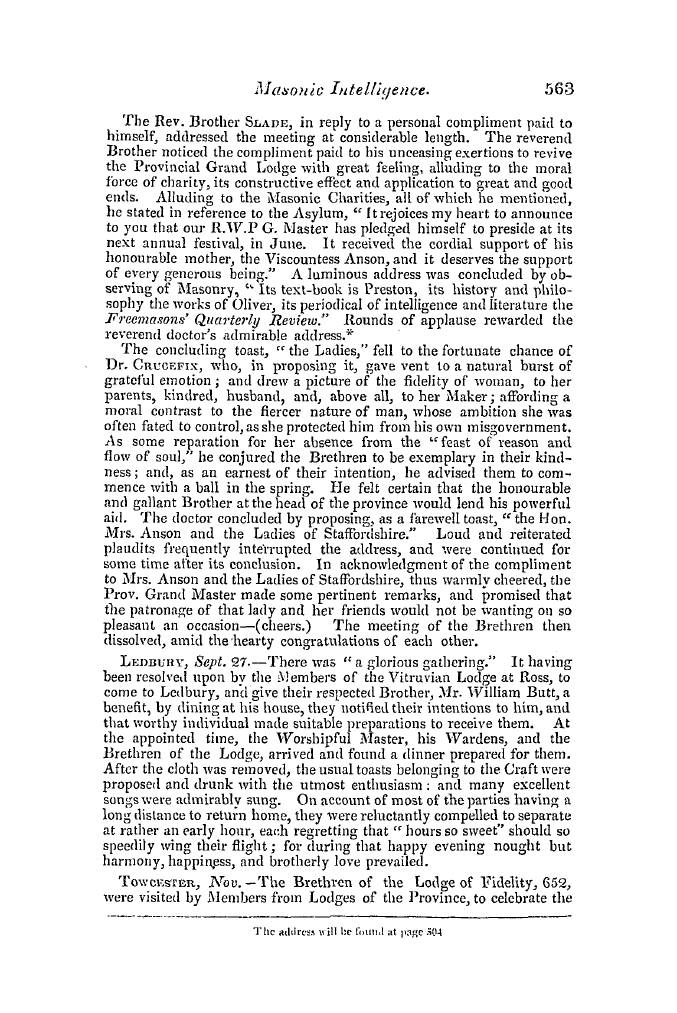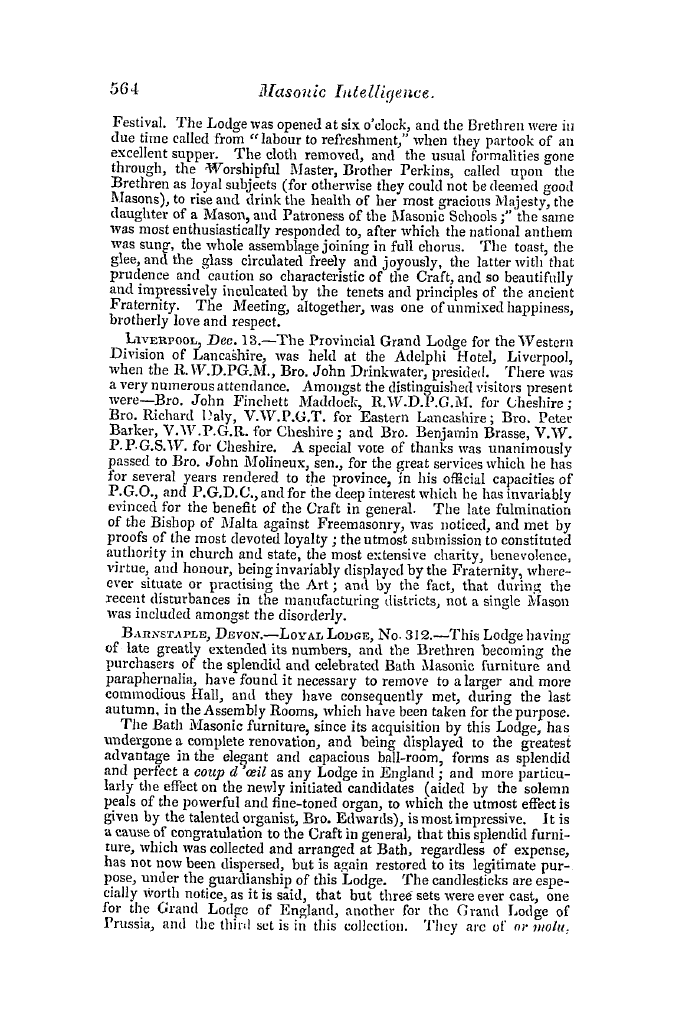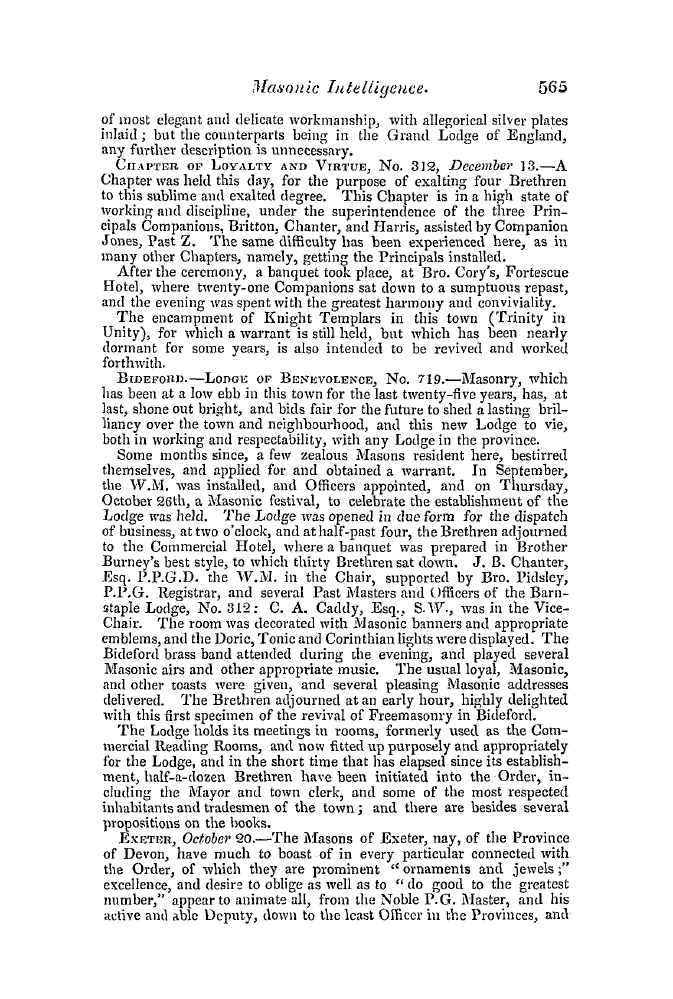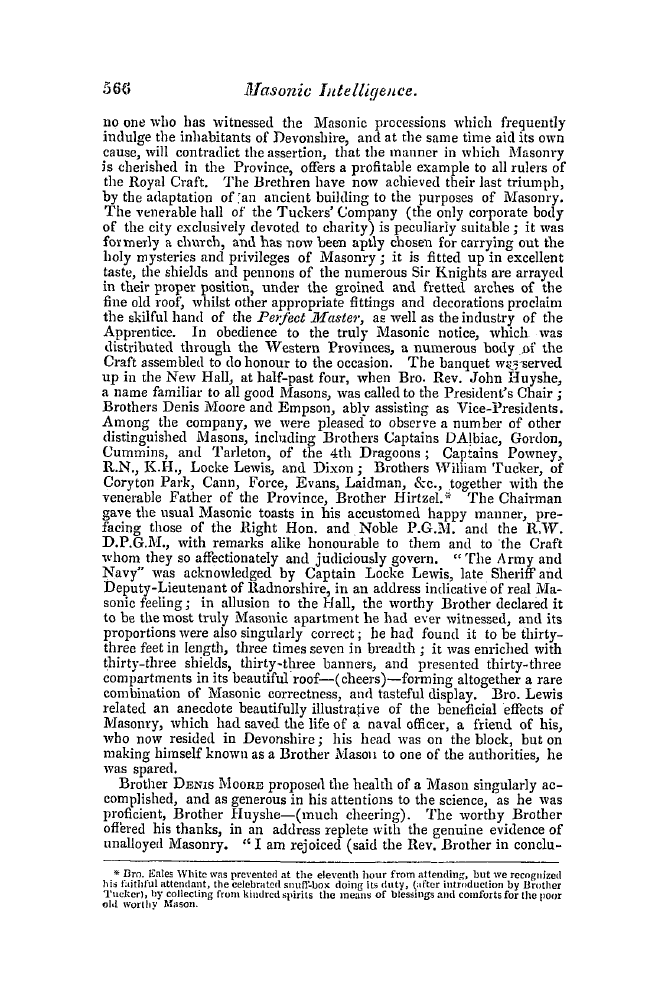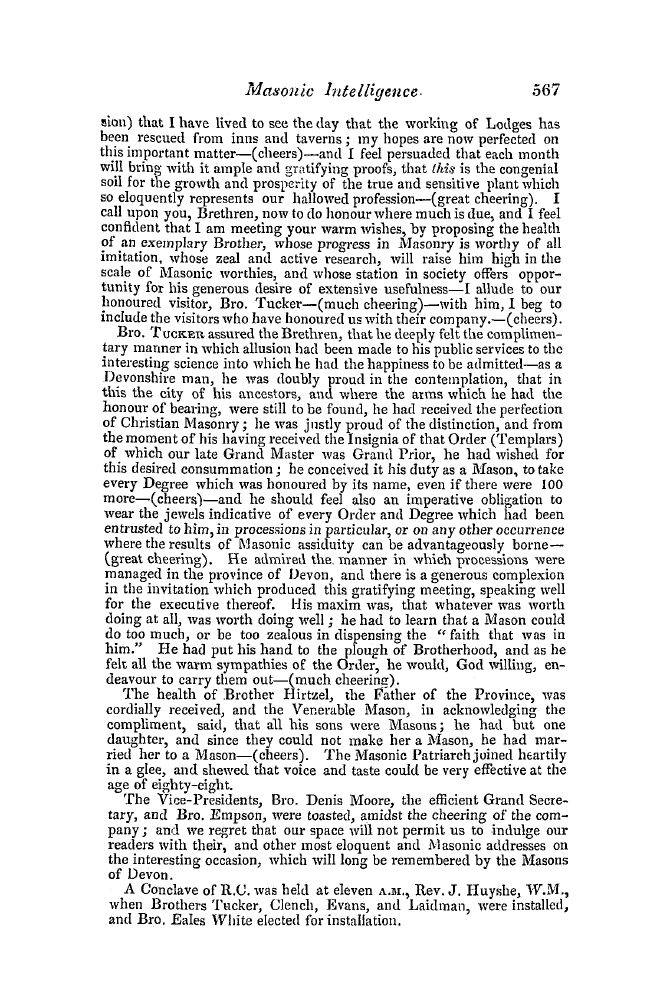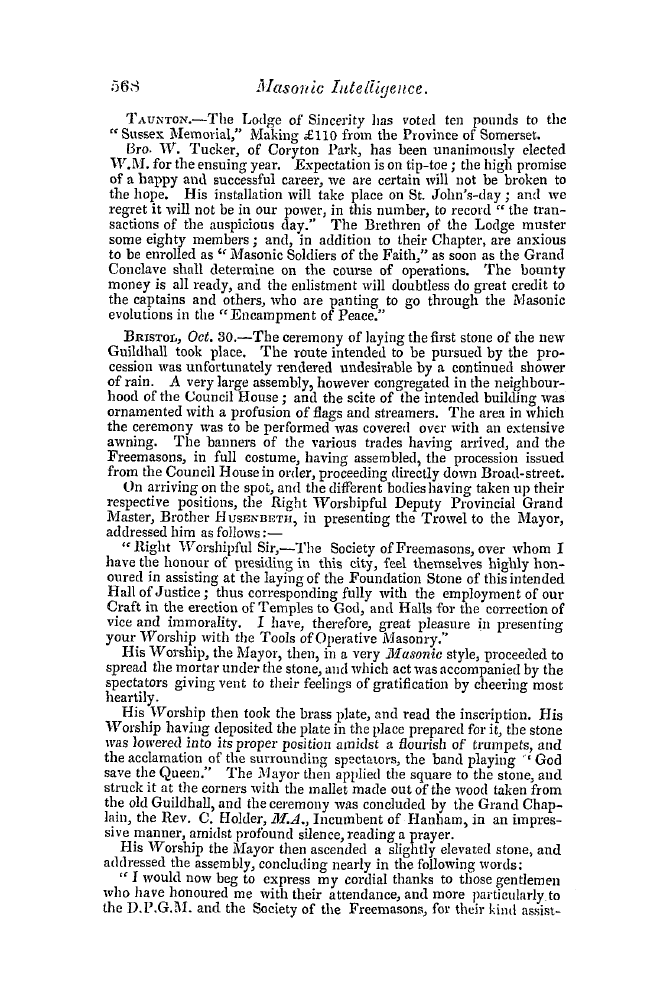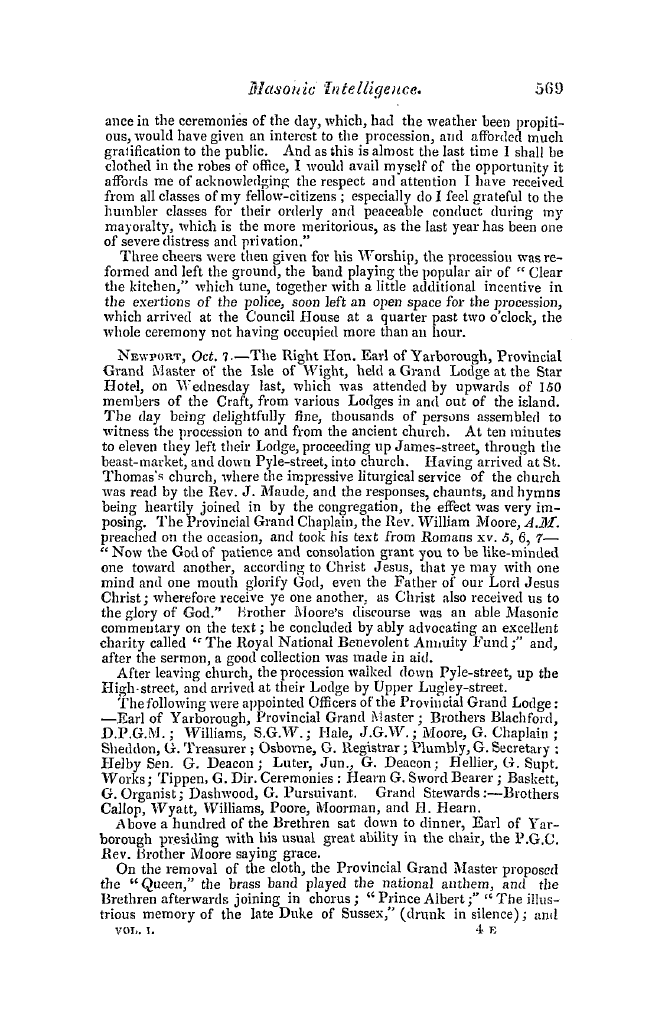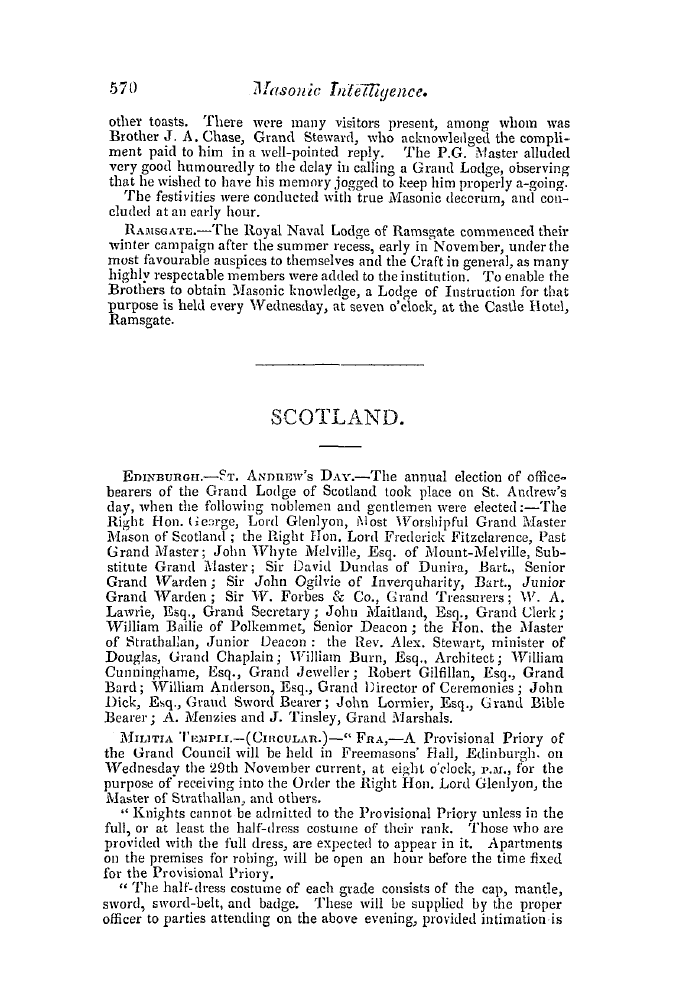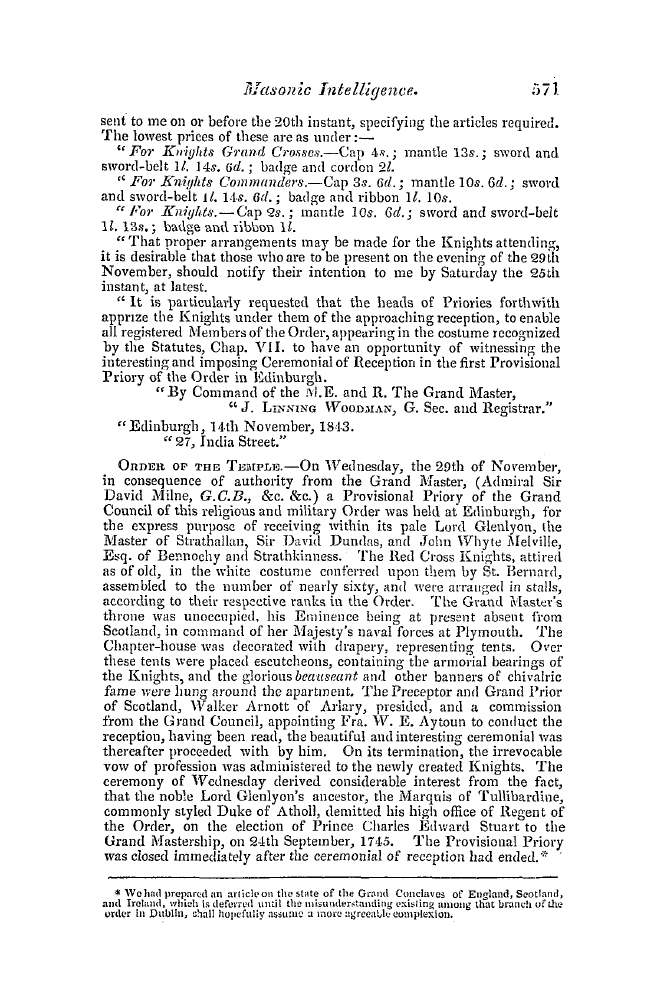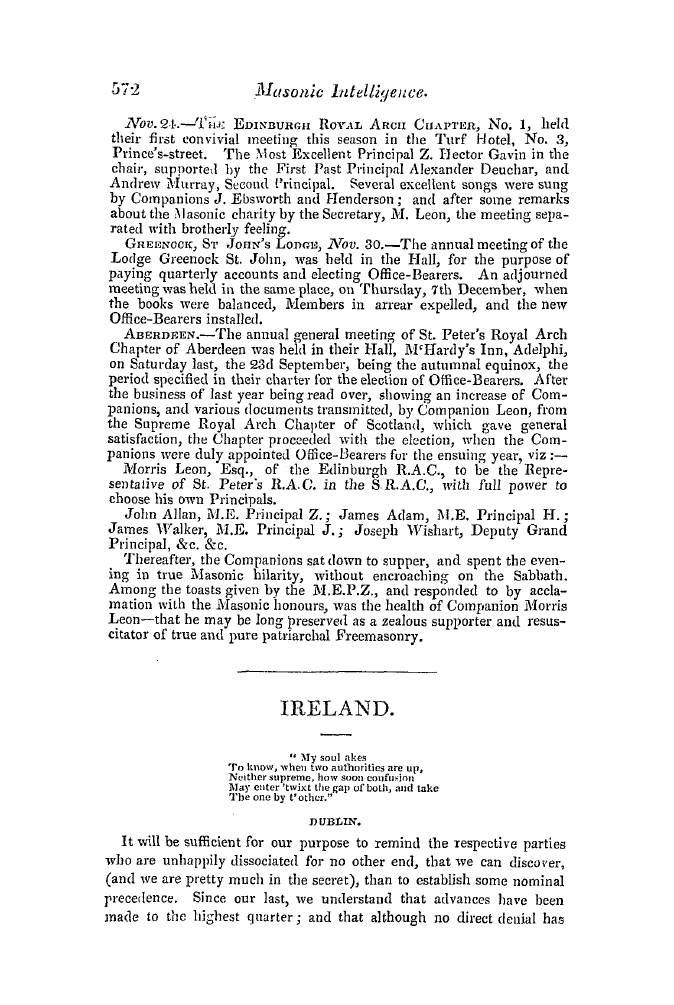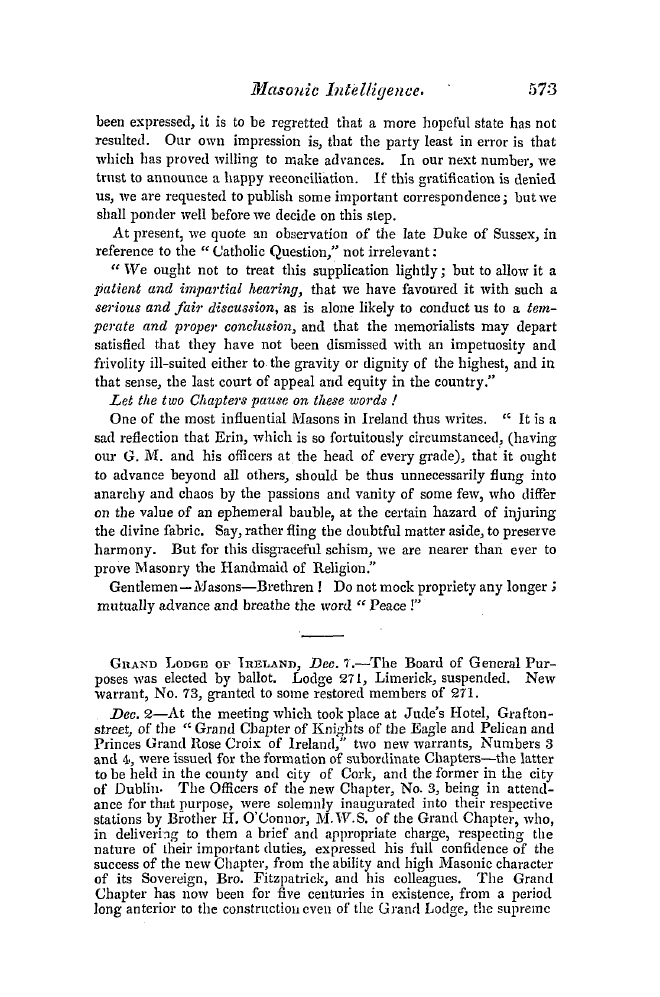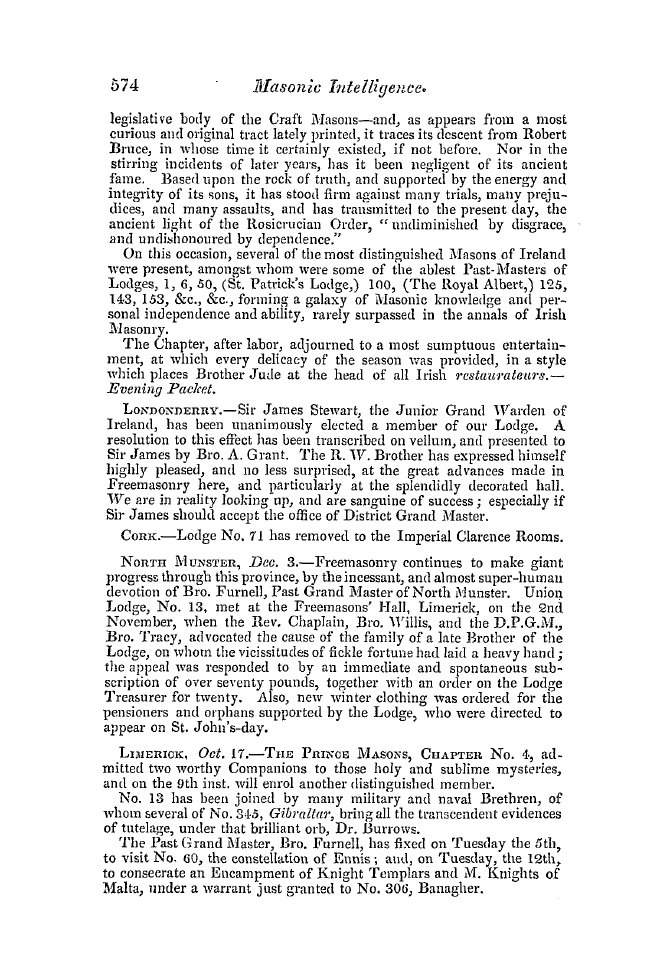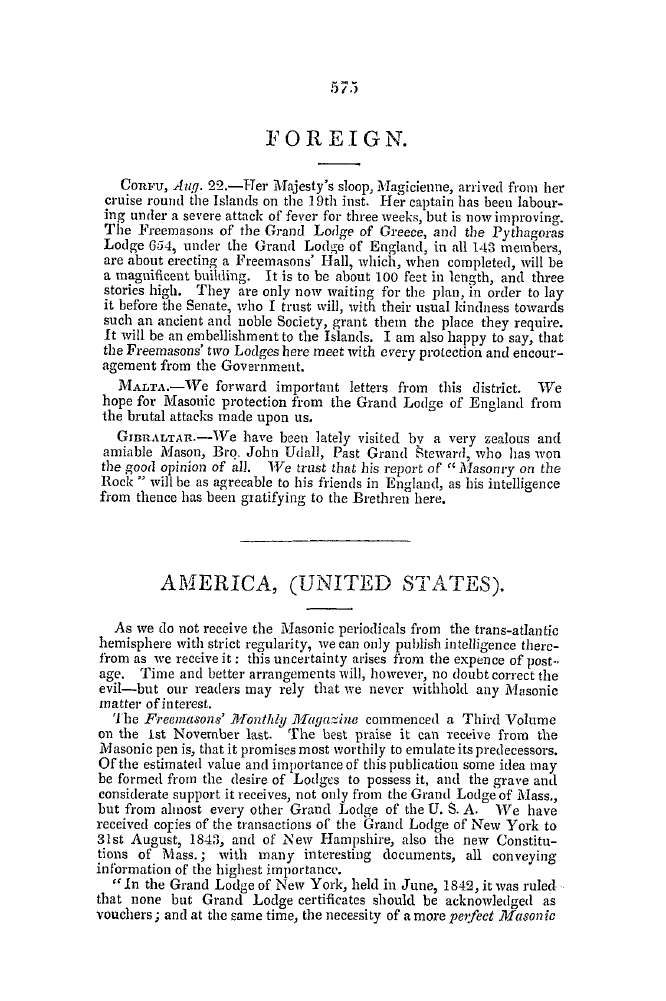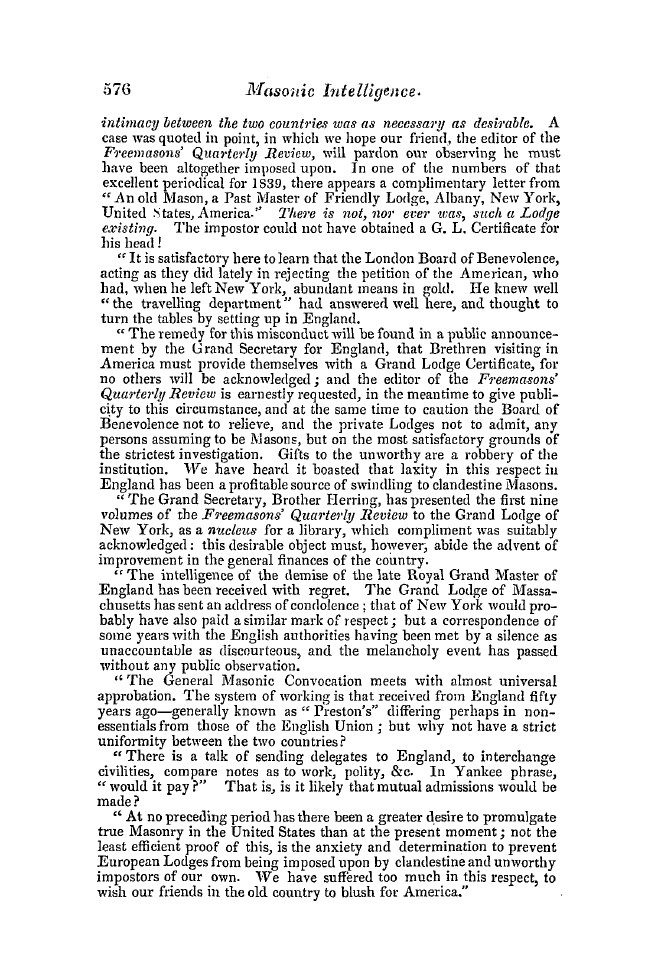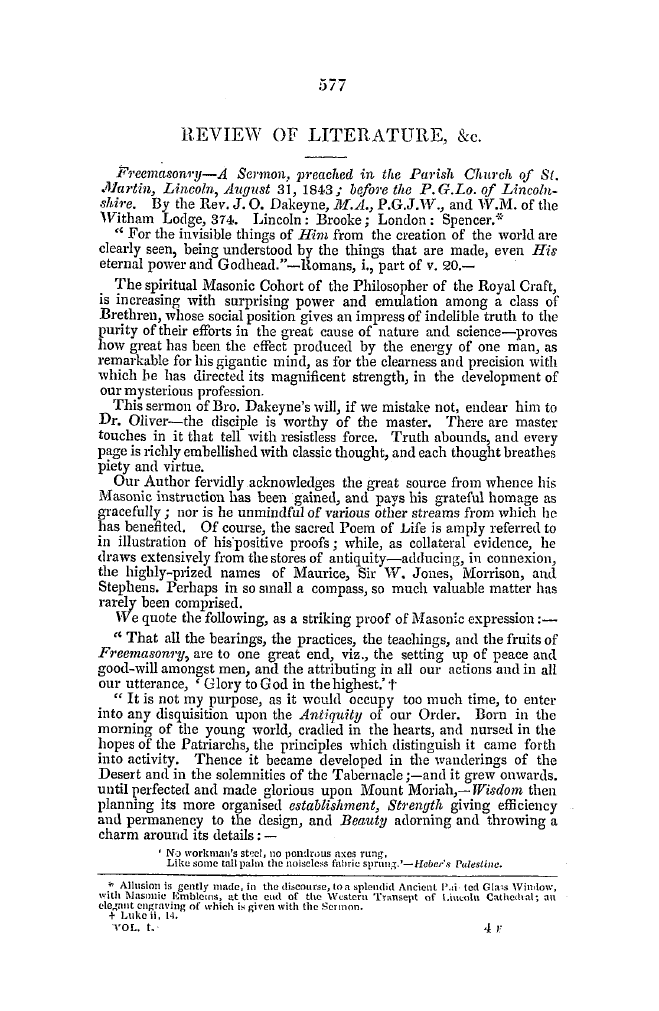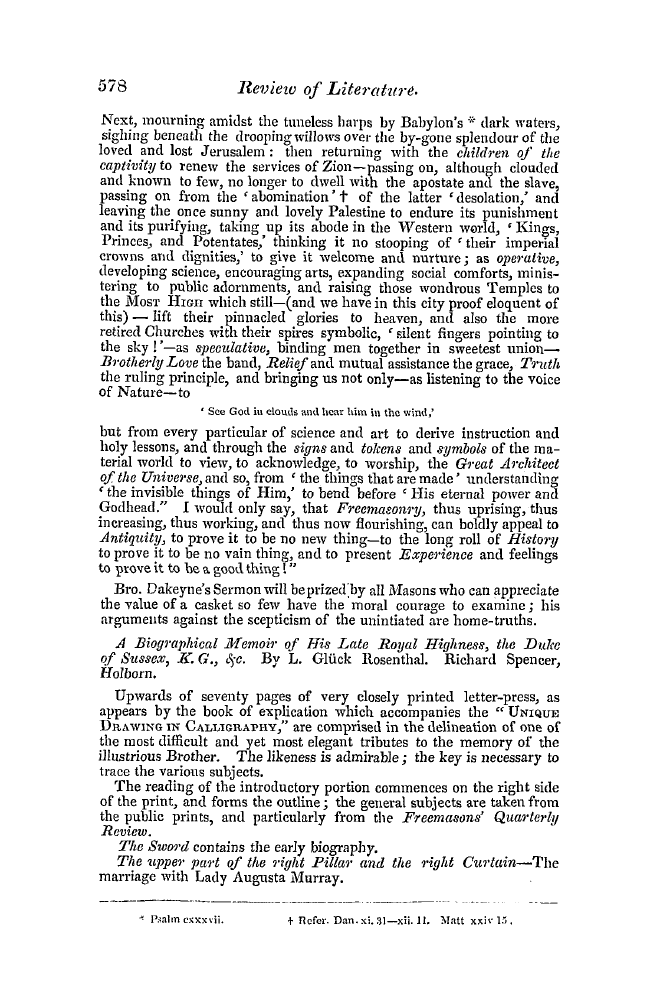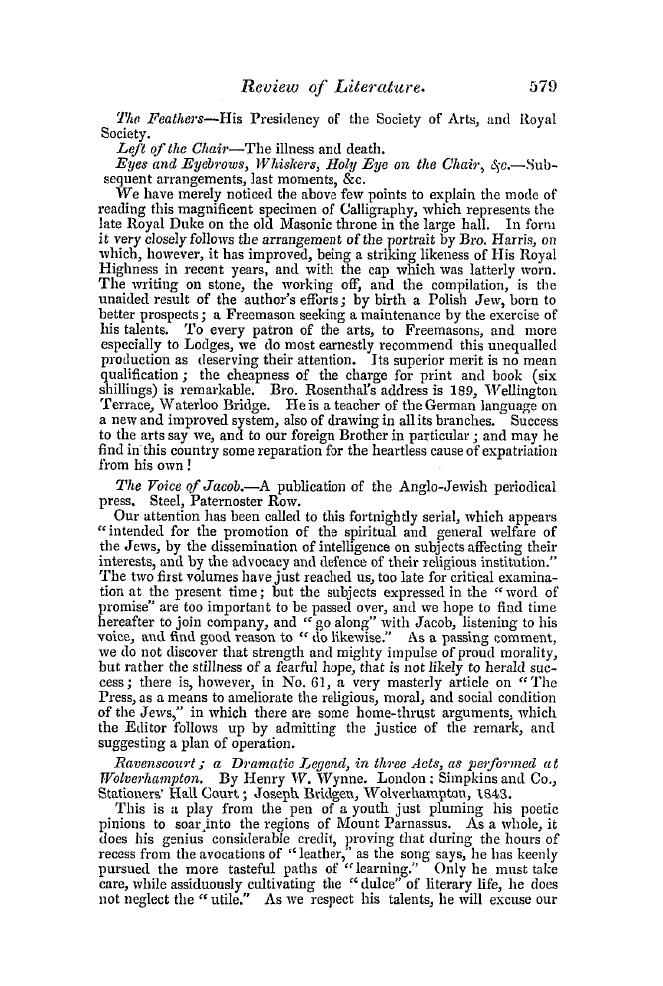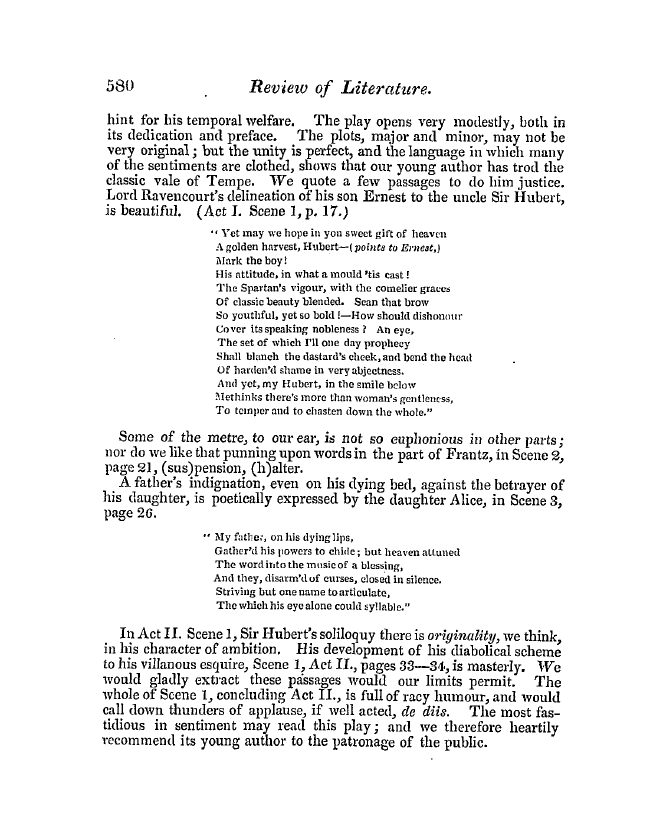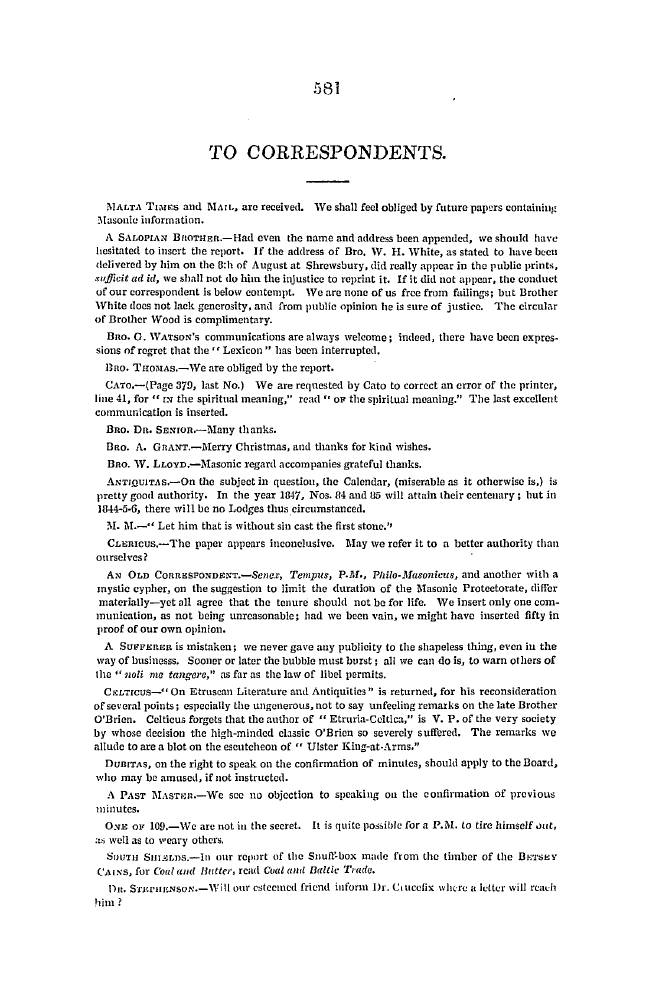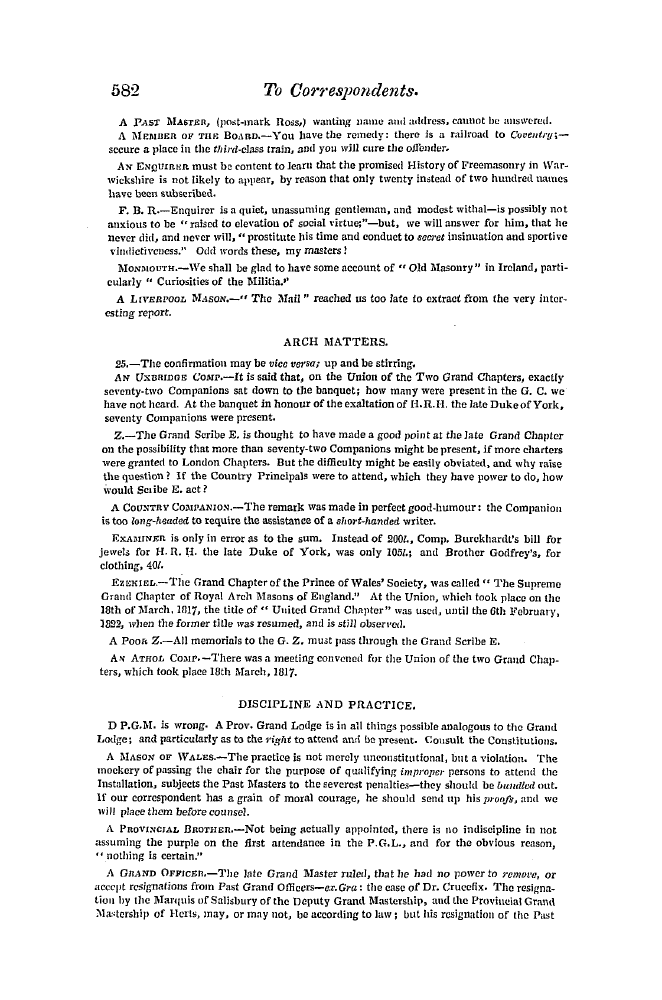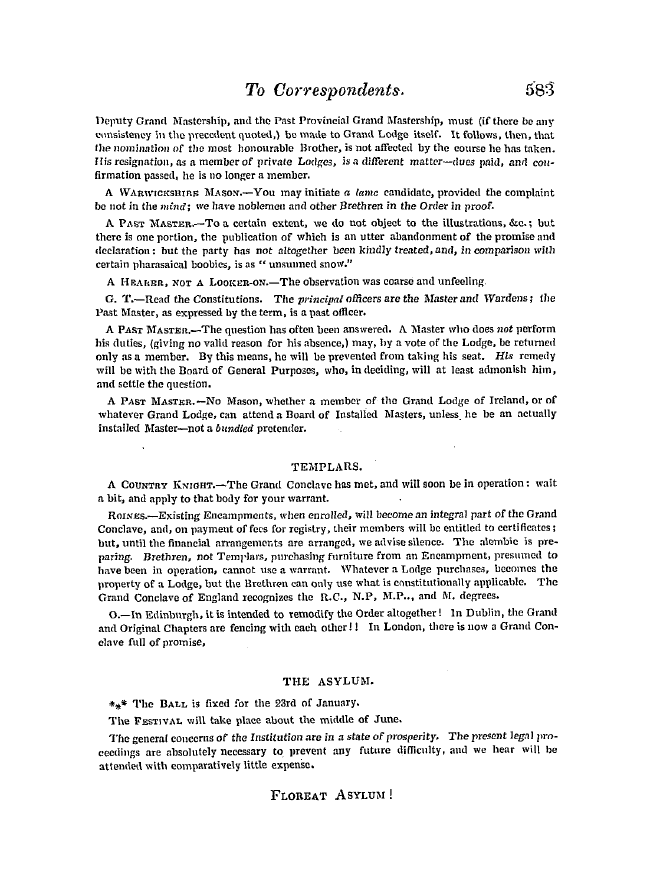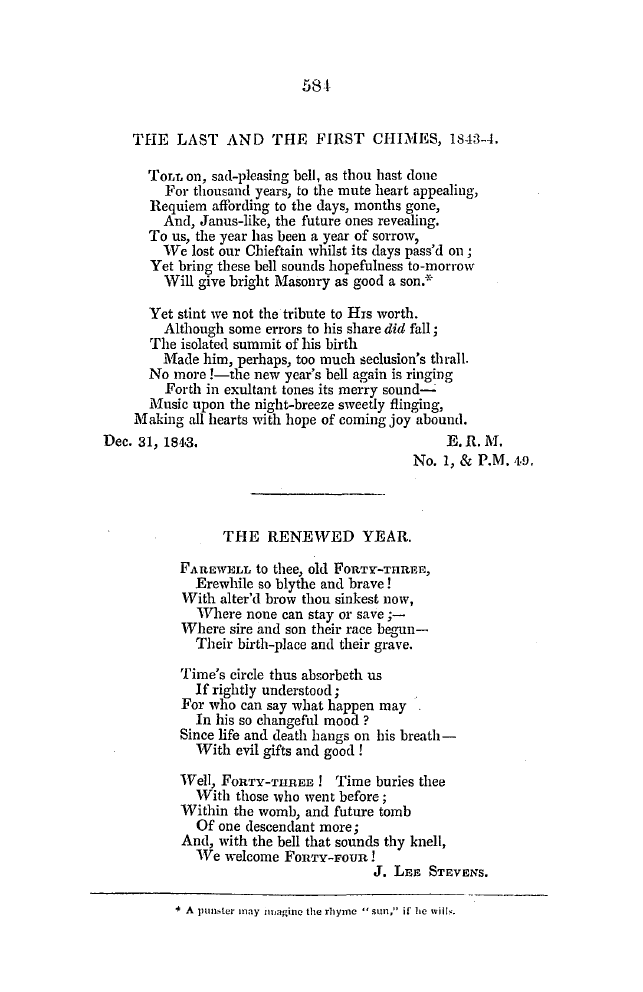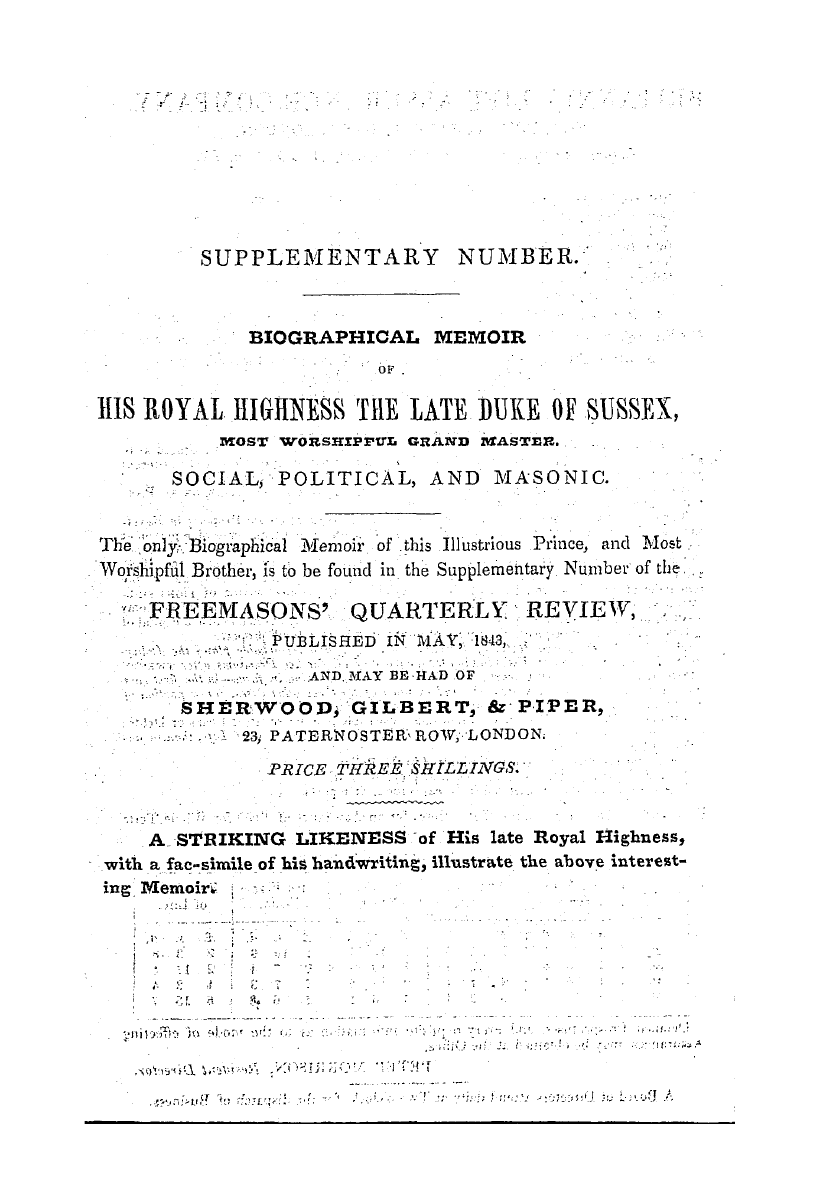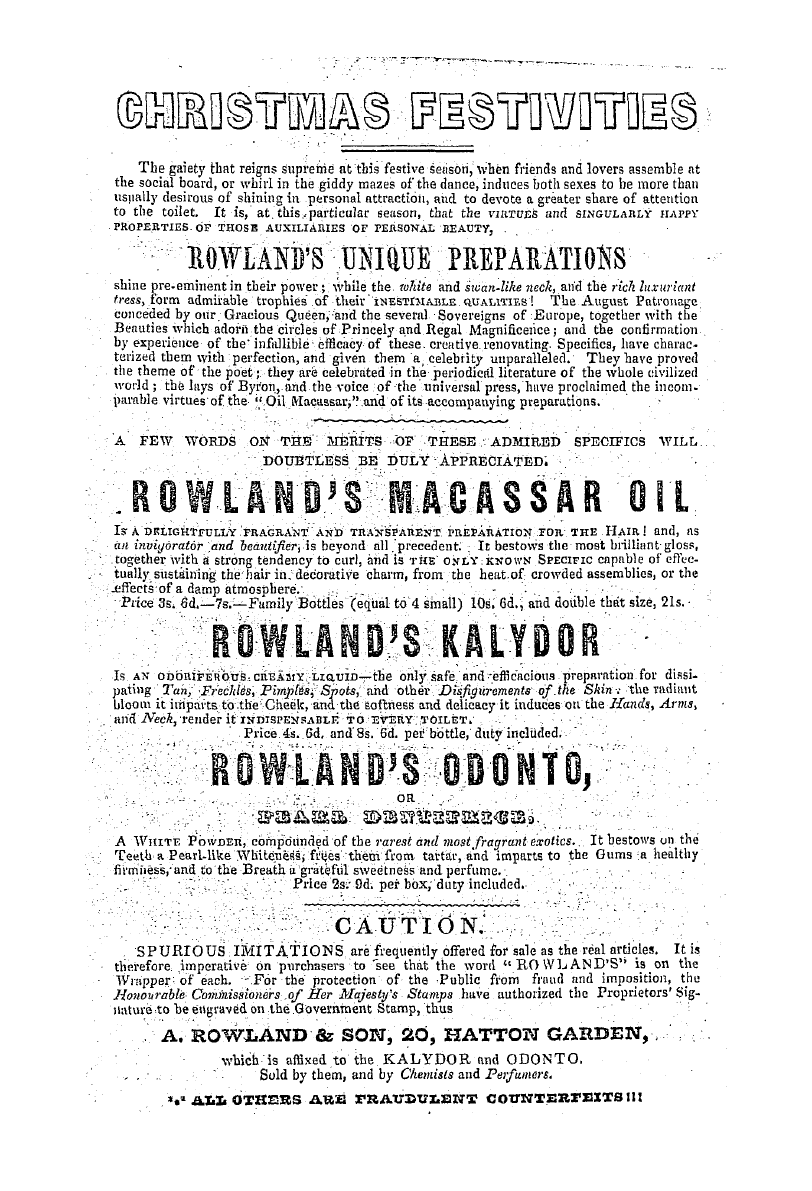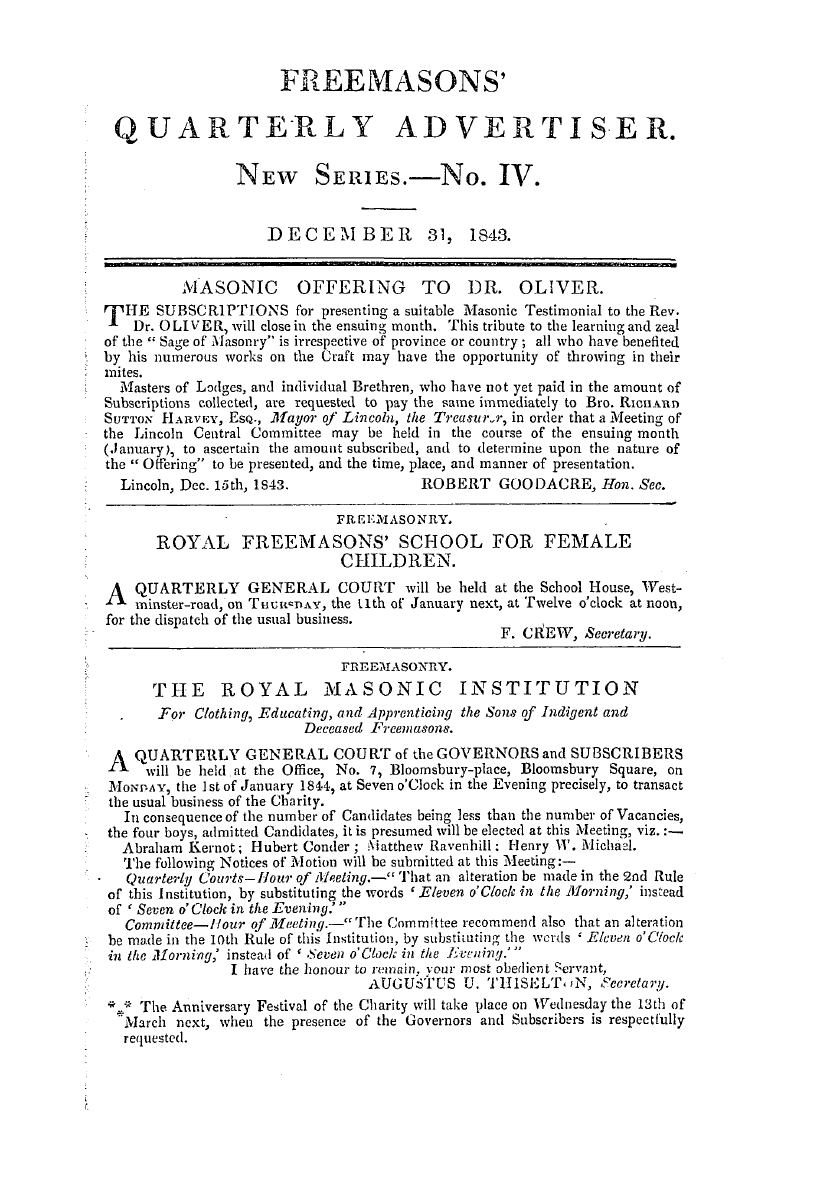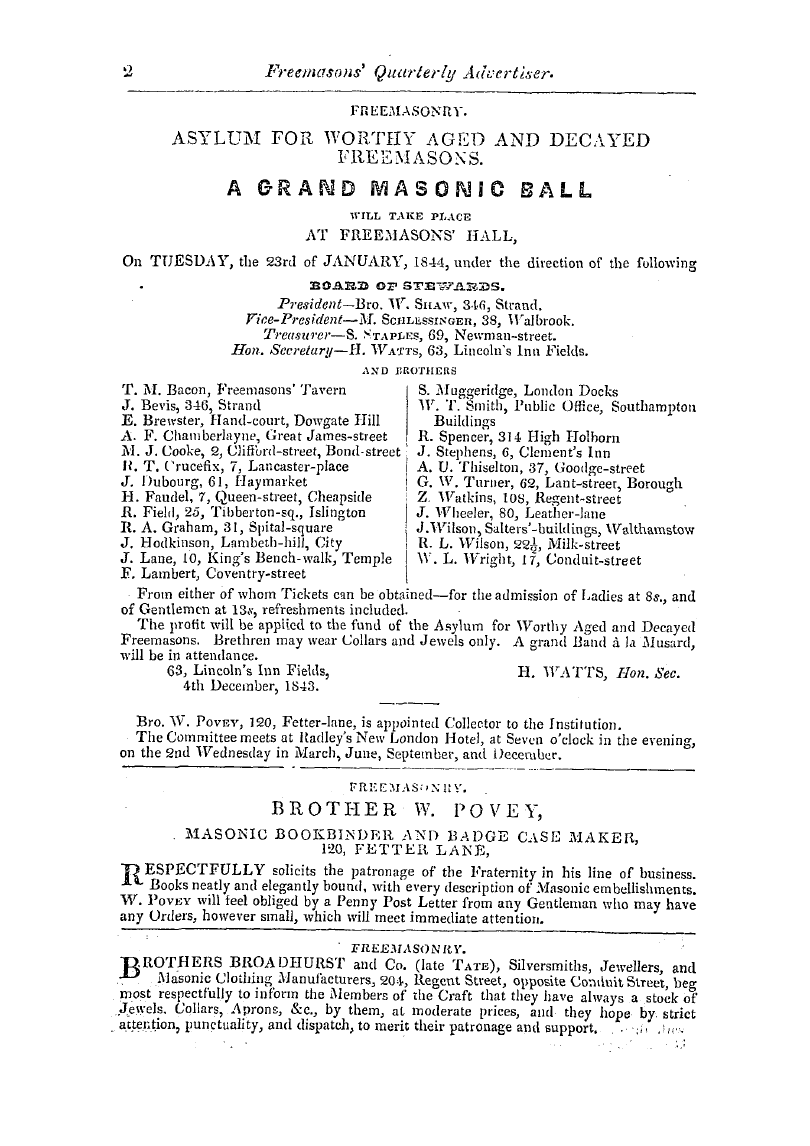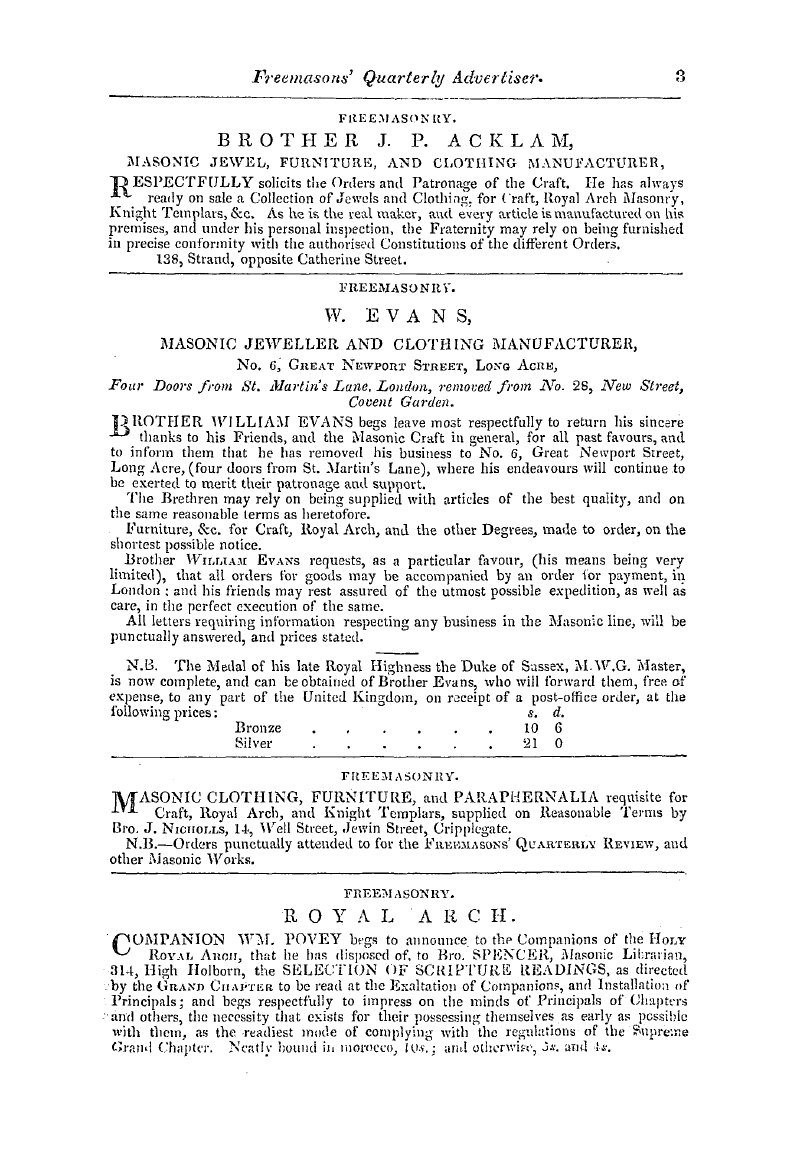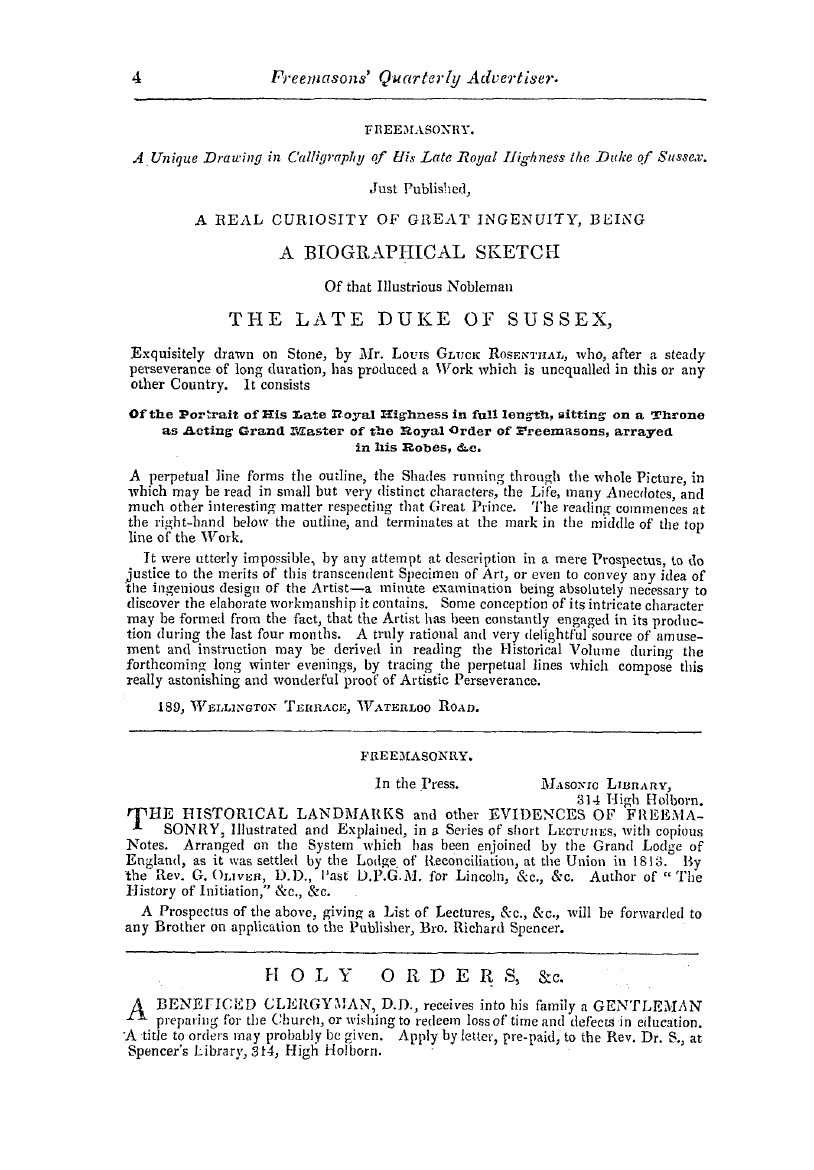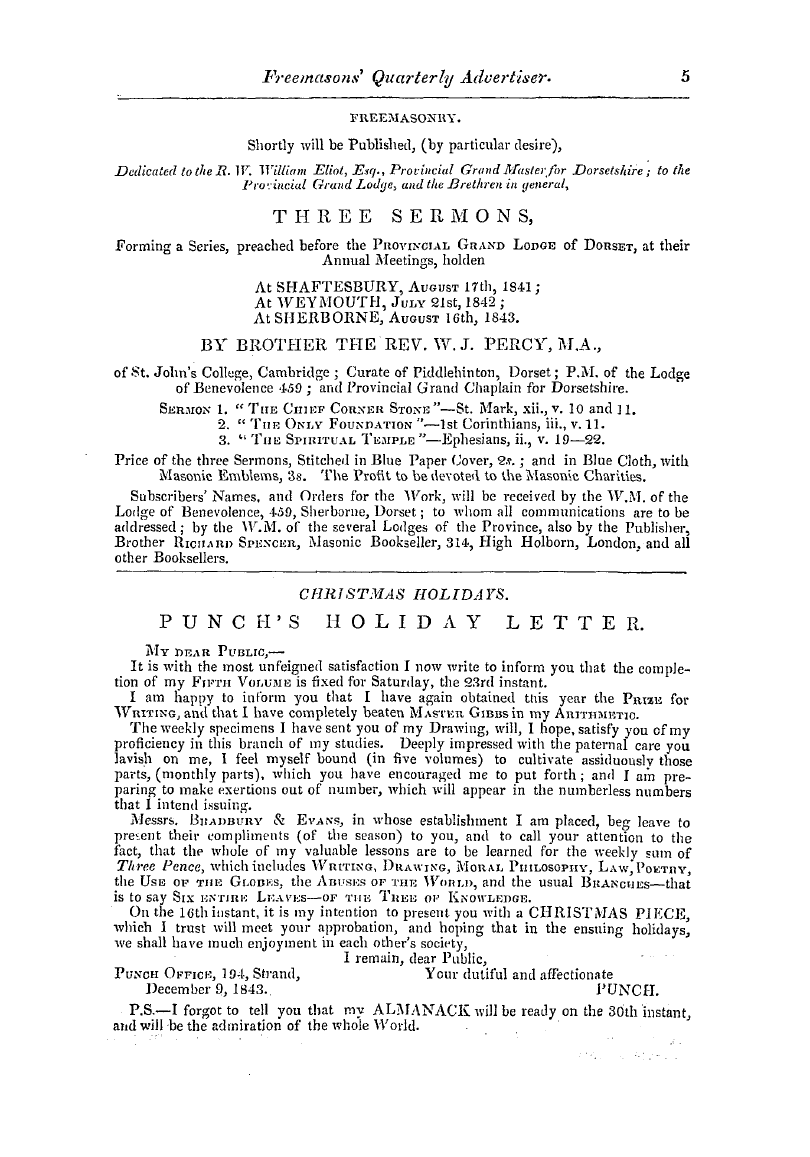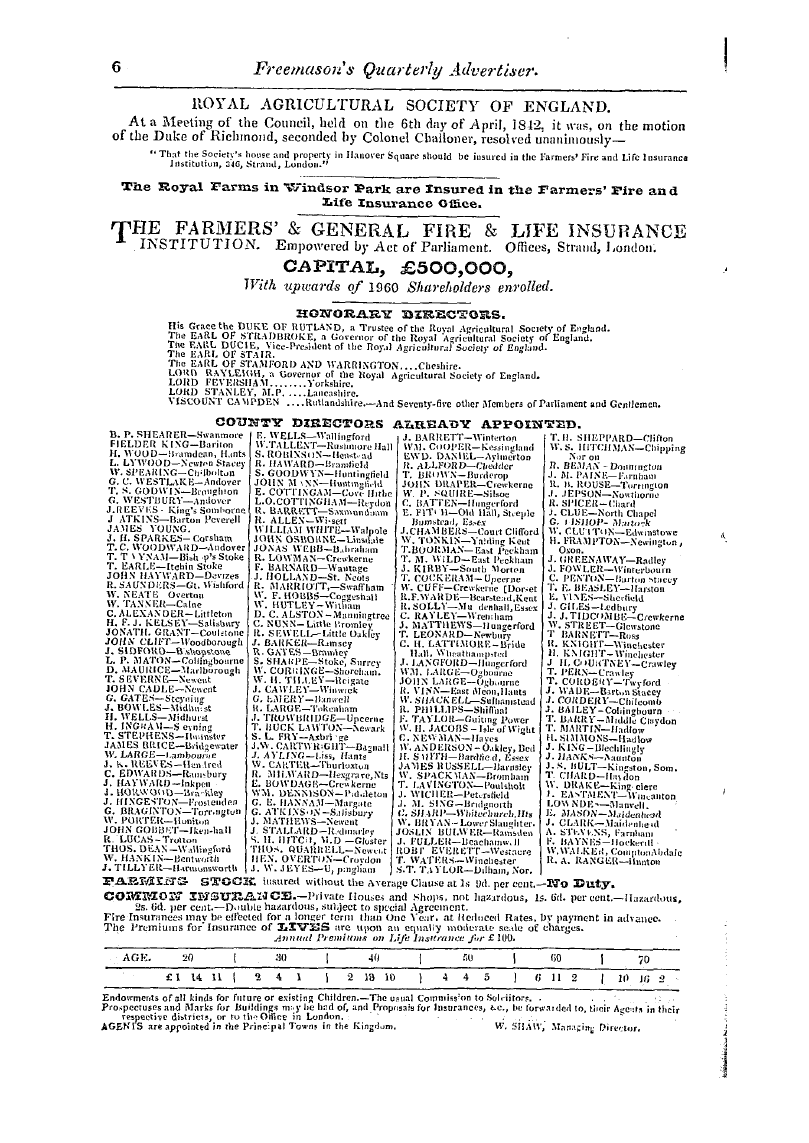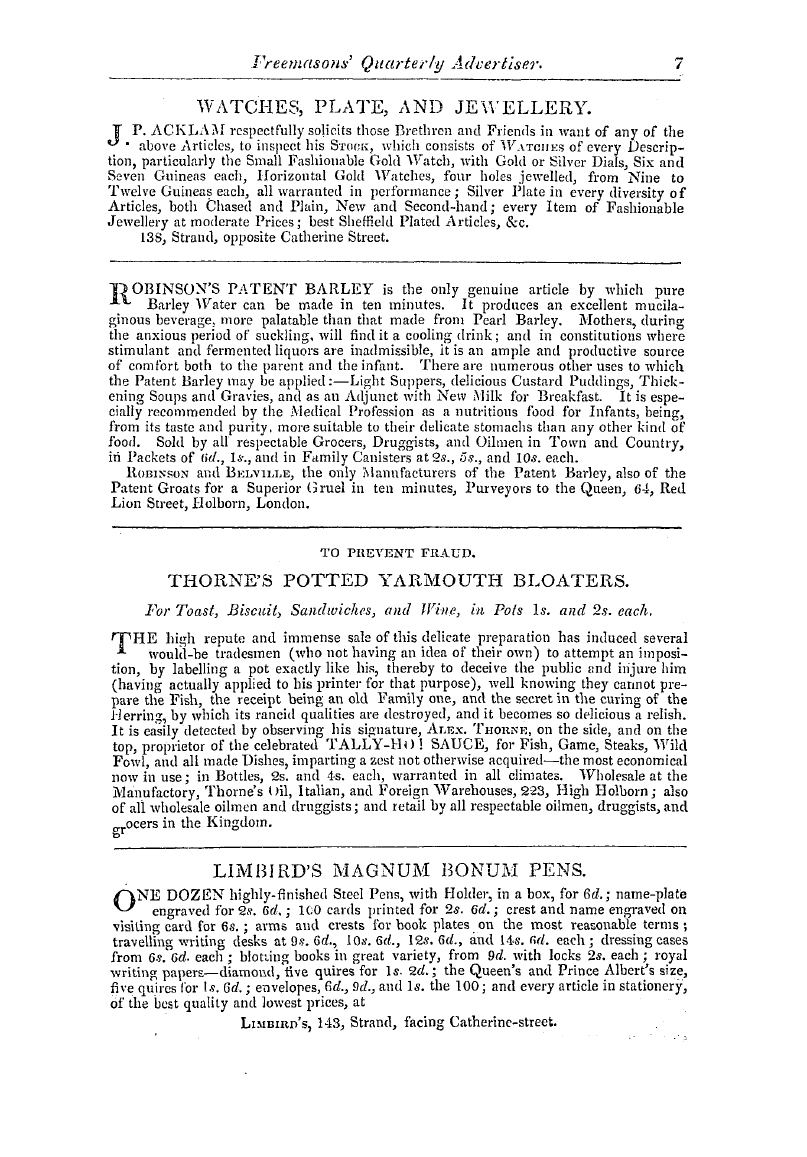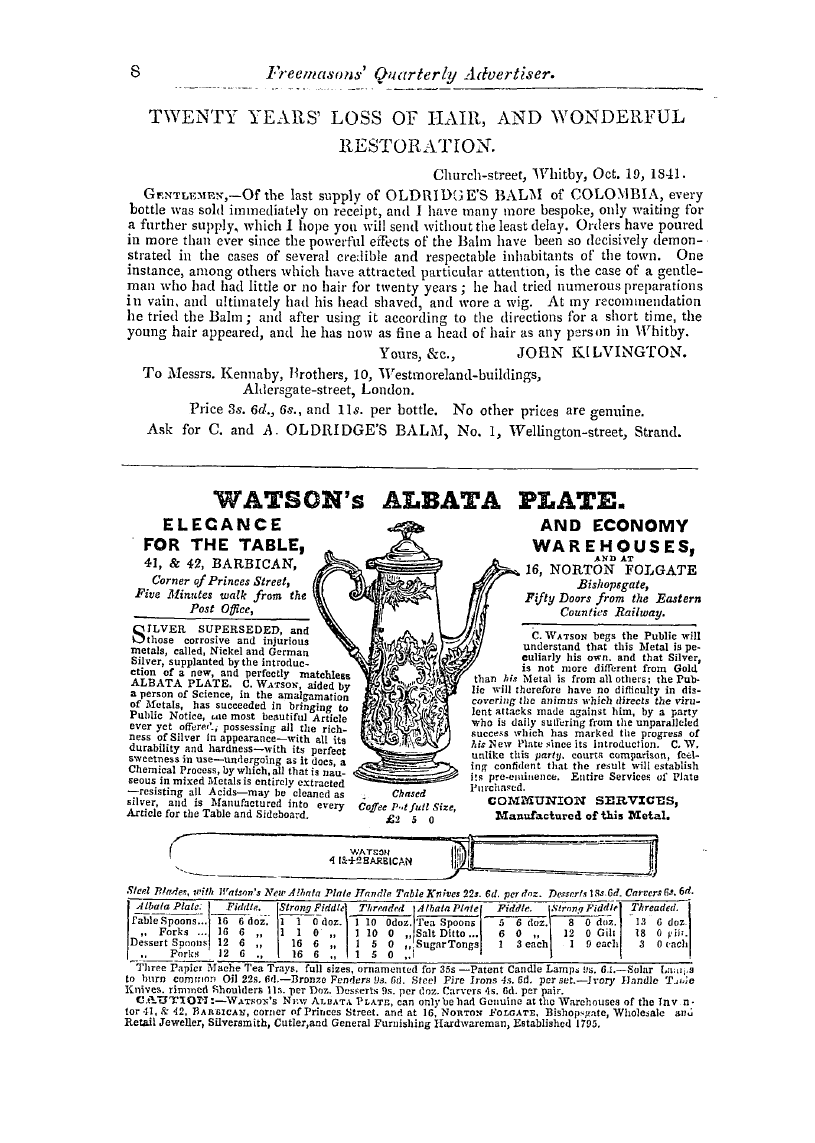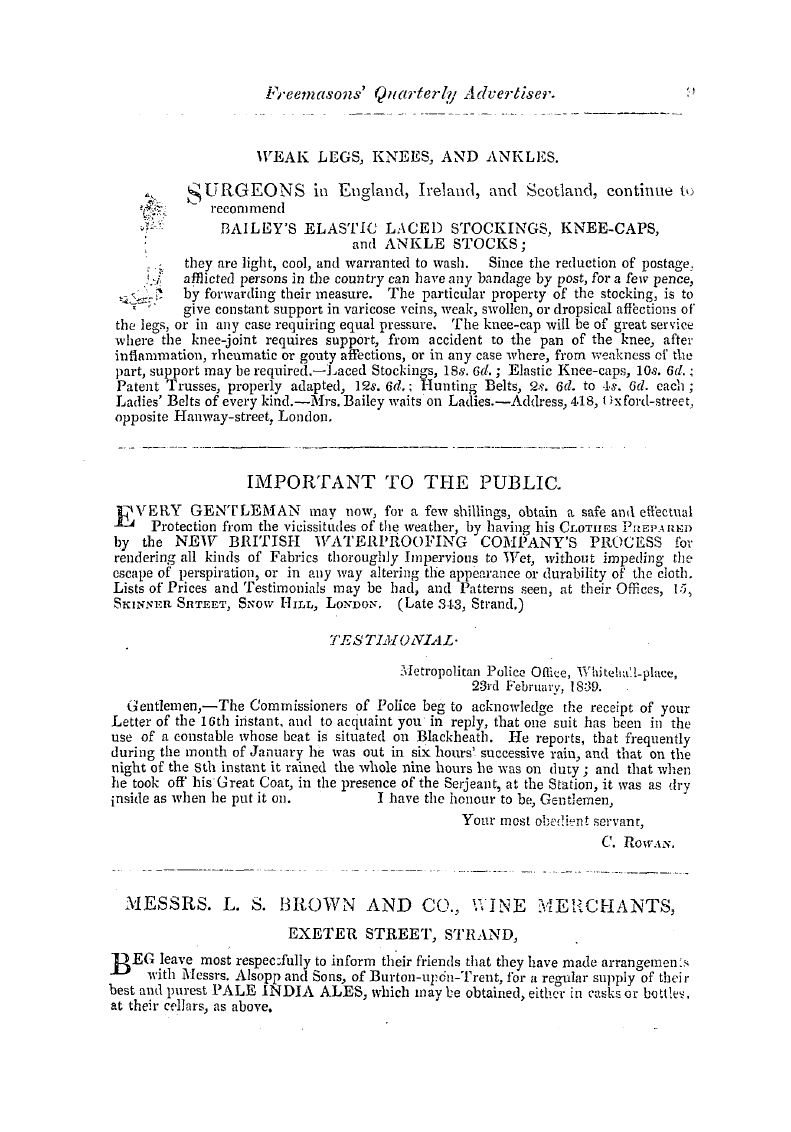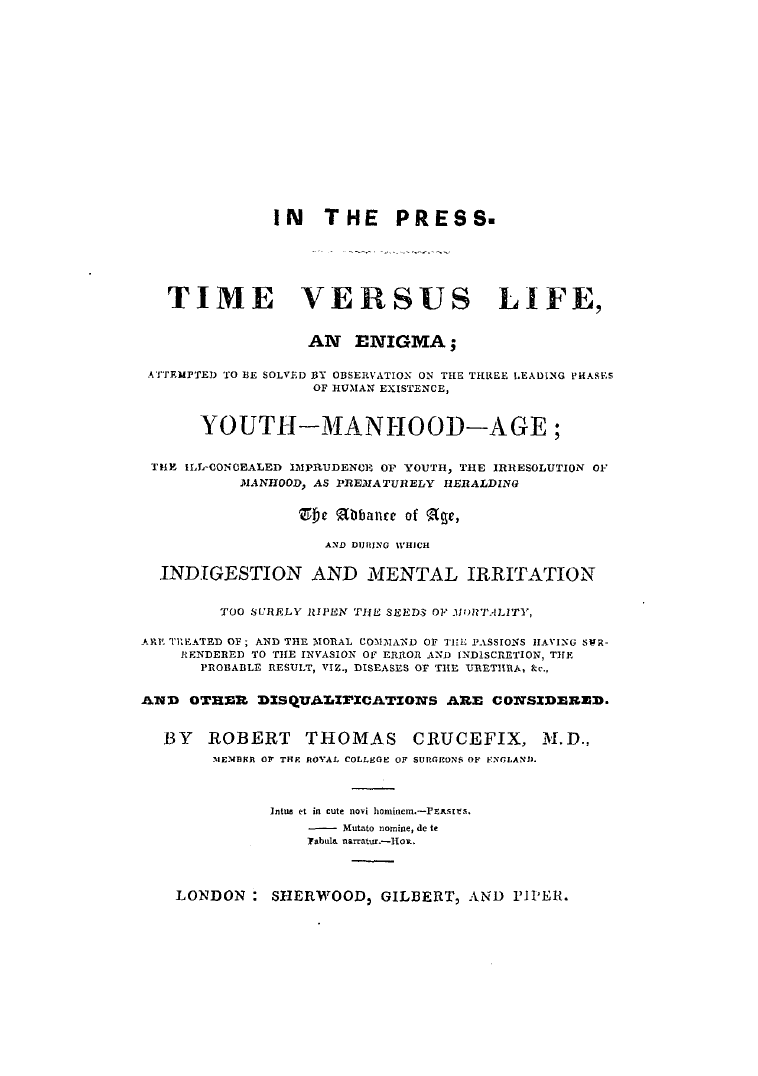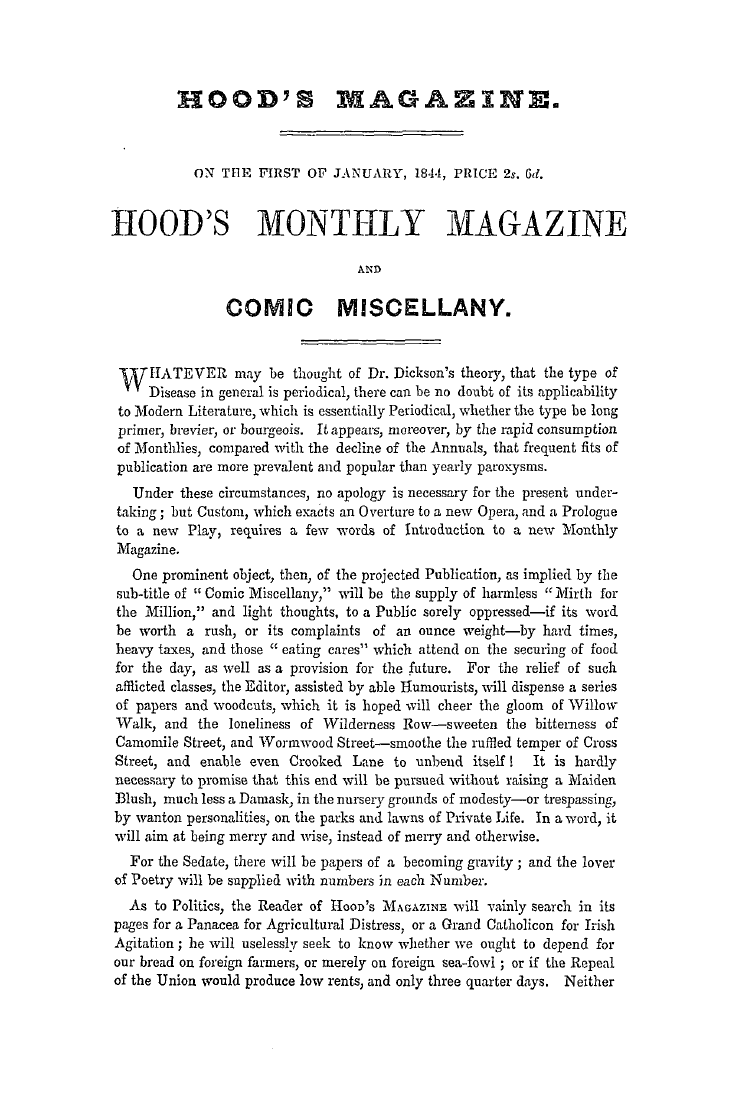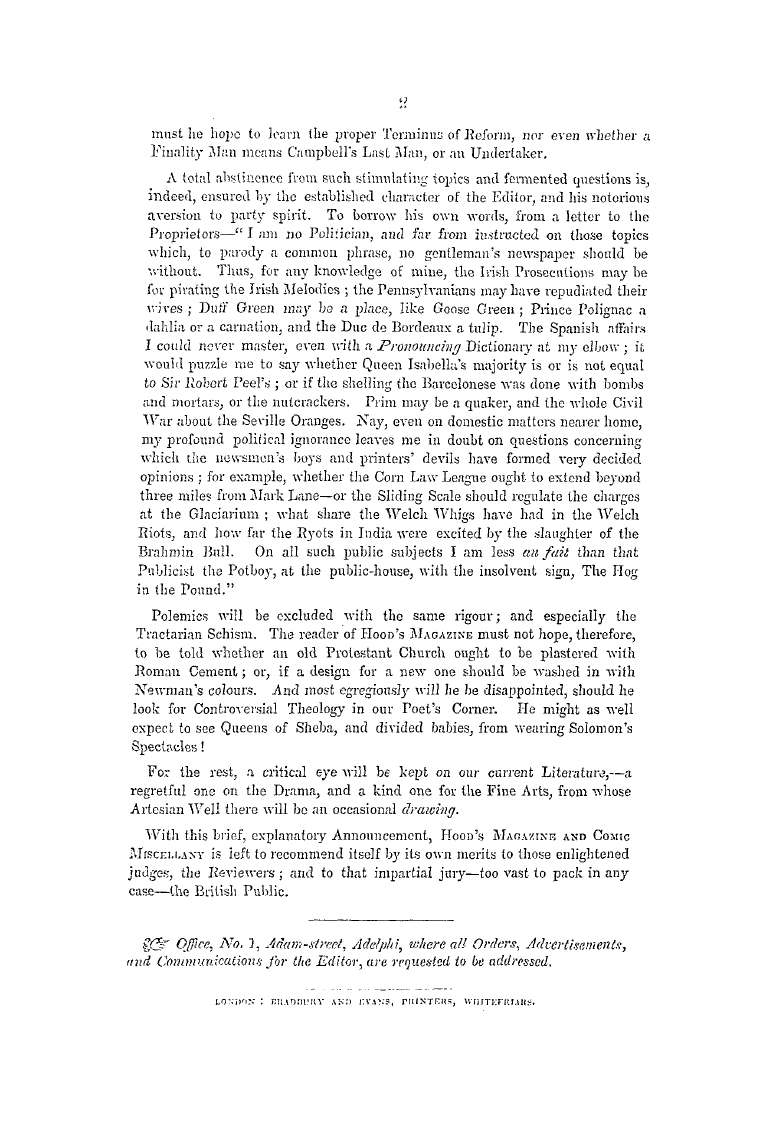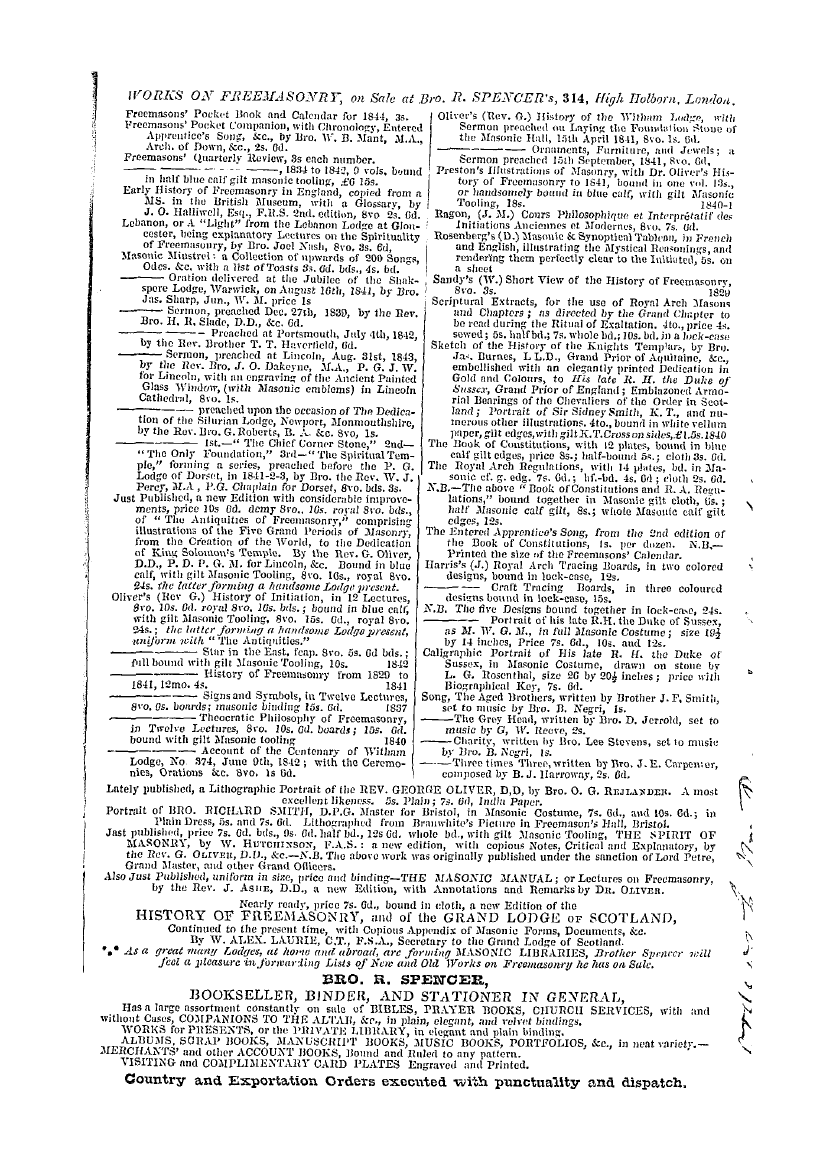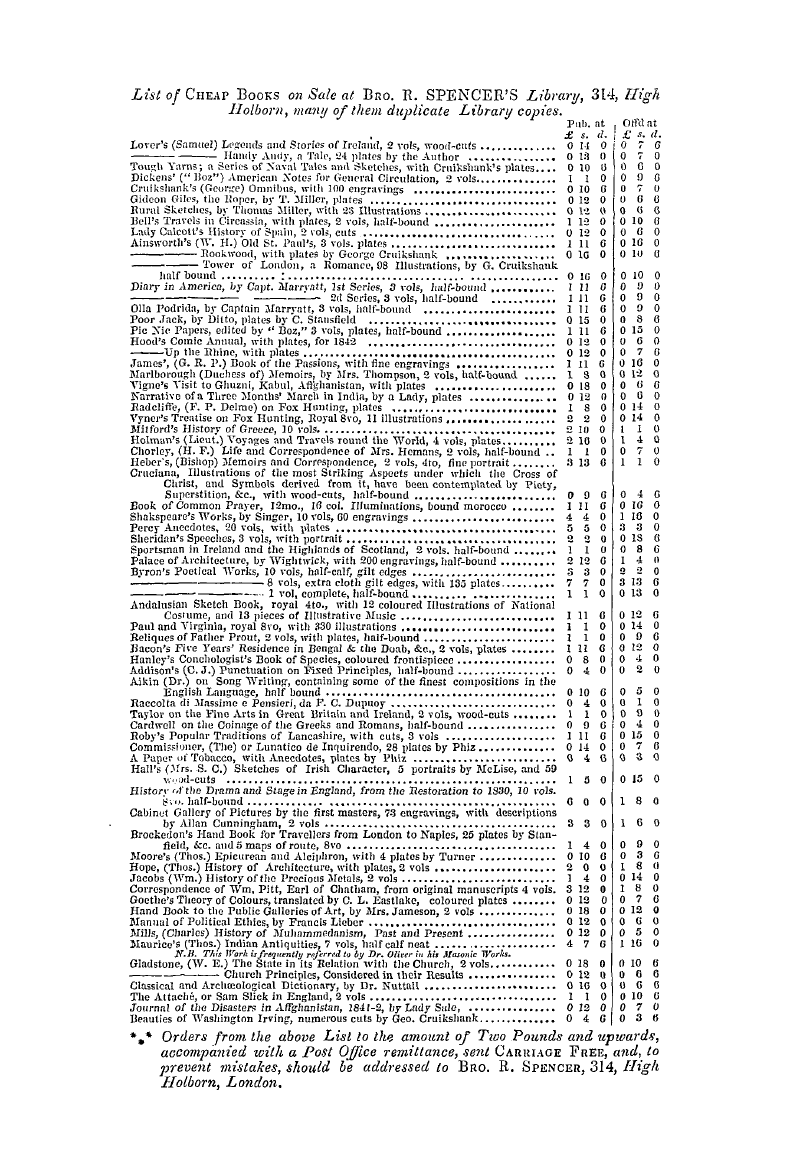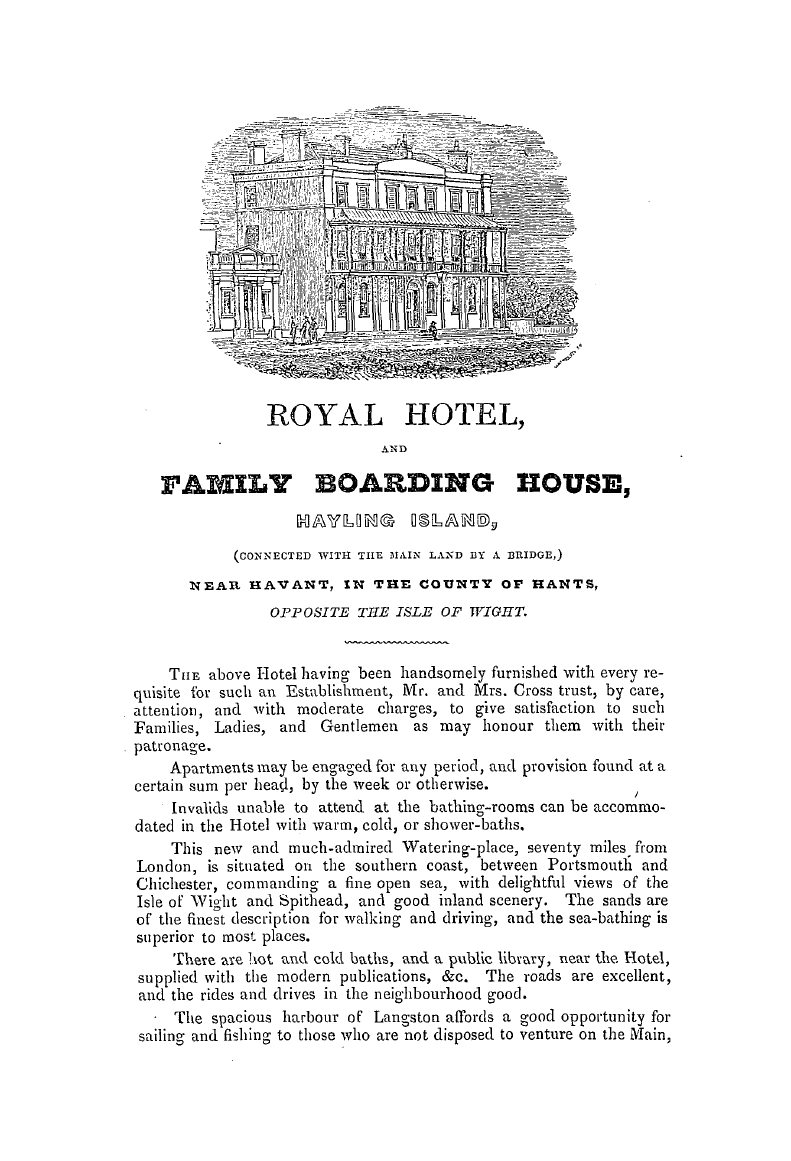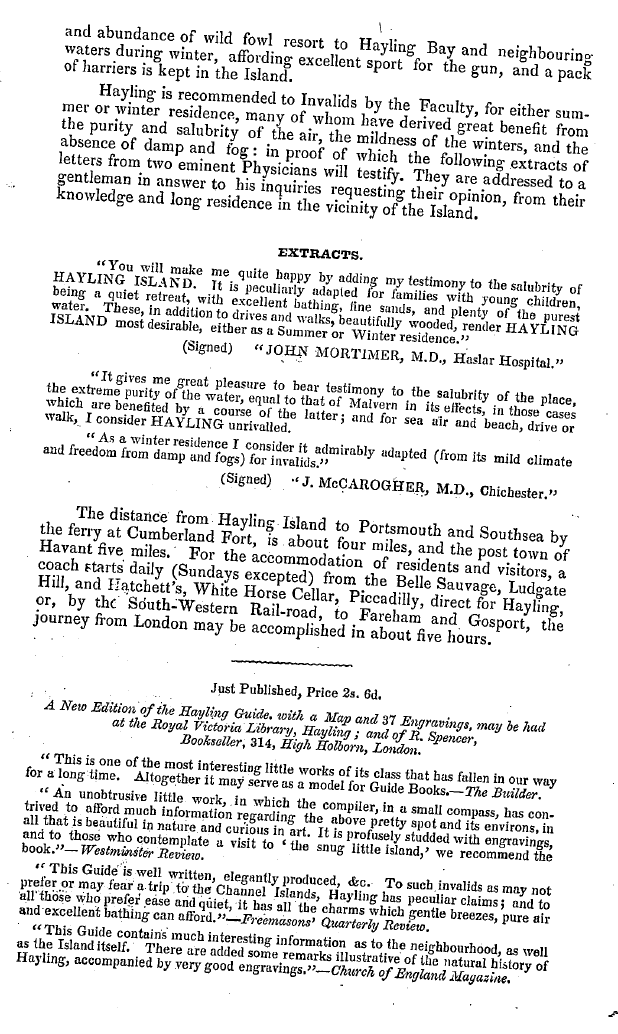-
Articles/Ads
Article OBSERVATIONS ON THE DEGREE OF "ROSE CROIX." ← Page 2 of 5 →
Note: This text has been automatically extracted via Optical Character Recognition (OCR) software.
Observations On The Degree Of "Rose Croix."
from the original of the Rose Croix , is so full of Gallicisms , or references to other degrees , notoriously of French invention , as to prove , without doubt , that they are derived from some French ritual . We are therefore forced to conclude , not only that the degree of Rose Croix of 1747 did not previously exist , in its present form , in England or Scotland , but that it was a corruption of some other degree then practised . The name Rose Croix being a translation of Rosy Crossat once points out that
, the Royal Order , composed of the two degrees of H . R . D . M . and R . S . Y . C . S ., was that on which the piracy was made . And , indeed , all who know the Rose Croix of 1747 , and also the Royal Order , will at once perceive , notwithstanding the great dissimilarity between the two , infallible tokens of the one being a perversion of the other . When Prince Charles Edward stated the Rose Croix to he synonimous with H ., or the Royal Orderhe miht have supposed the difference to be immaterial
, g . but these differences are in reality so important , as to lead to a suspicion that they are not accidental ; and that the original degrees of the Royal Order were intentionally altered , as well as the name ; although after 1745 it was found expedient to resume the translated appellation of Rose Croix along with the ceremonial invented for it , as the Eagle and Pelican . Several ^ reasons may be assigned for the alteration of the ritual , secrets , & c . The Royal Order was for the first half of the last century almost
extinct in Scotland ; and such portions of it as could be collected b y the Chevalier ( John Michael ) Ramsay and others , ( to heighten the political importance of the Prince among the Masonic Fraternity , in France ) , were either unconnected , or displayed too much a spirit of Protestantism for Roman Catholics of that period . In fact , the Royal
Order breathes the purest spirit of Christianity ; and while St . John ' s Masonry can be given to one of whatever sect or religion he belongs to , the Royal Order can be given to any one who is a Christian and Trinitarian , —it gives no offence to either Protestant or Roman Catholic ; while , on the other hand , the Rose Croix of 1747 , and as still practised in France , Ireland , and many other countries , introduce a middle chamber , ( borrowed from the doctrines of the Popish church ) , through
which a candidate is supposed to pass before he can be admitted to the state of a perfect Mason : the introduction , also , of the conductor R , savours likewise of the Roman church . But there can be no doubt that the concoctors of the Rose Croix did not know perfectly the Rosy Cross , nor its preceding step of H . R . D . M ., also of the Royal Order ; and that out of tbe detached portion to which they had access , or recollected ( for some may have been initiated ) , they framed not only the
Eagle and Pelican , or Rose Croix , but also the " Knights of the Sword , " and many other of the degrees now called , abroad— " Scotch Masonry , " but which were all , at least in their present form , invented in France or Prussia , during the last century . Whether then we view the Hose Croix , or rather , as it ought to be called , the Eagle and Pelican , as an invention ofthe last century , or as a Roman Catholic perversion of the genuine Scotch or Royal Orderit is
, to be regretted that it has now gained ground in this country ; one reason for its having done so is , that many Encampments or Chapters which practise it , suppose it to have been almost coeval with Christianity itself ! Others ( for in most of the old modes of working it , it distinctly alludes to the powers conferred by the Metropolitan Chapter of ll . ) suppose it to be the degree of H . R . D . M . itself , of which the Grand Chapter is nt Edinburgh ; and hence they date the degree from 1311 , the year of
Note: This text has been automatically extracted via Optical Character Recognition (OCR) software.
Observations On The Degree Of "Rose Croix."
from the original of the Rose Croix , is so full of Gallicisms , or references to other degrees , notoriously of French invention , as to prove , without doubt , that they are derived from some French ritual . We are therefore forced to conclude , not only that the degree of Rose Croix of 1747 did not previously exist , in its present form , in England or Scotland , but that it was a corruption of some other degree then practised . The name Rose Croix being a translation of Rosy Crossat once points out that
, the Royal Order , composed of the two degrees of H . R . D . M . and R . S . Y . C . S ., was that on which the piracy was made . And , indeed , all who know the Rose Croix of 1747 , and also the Royal Order , will at once perceive , notwithstanding the great dissimilarity between the two , infallible tokens of the one being a perversion of the other . When Prince Charles Edward stated the Rose Croix to he synonimous with H ., or the Royal Orderhe miht have supposed the difference to be immaterial
, g . but these differences are in reality so important , as to lead to a suspicion that they are not accidental ; and that the original degrees of the Royal Order were intentionally altered , as well as the name ; although after 1745 it was found expedient to resume the translated appellation of Rose Croix along with the ceremonial invented for it , as the Eagle and Pelican . Several ^ reasons may be assigned for the alteration of the ritual , secrets , & c . The Royal Order was for the first half of the last century almost
extinct in Scotland ; and such portions of it as could be collected b y the Chevalier ( John Michael ) Ramsay and others , ( to heighten the political importance of the Prince among the Masonic Fraternity , in France ) , were either unconnected , or displayed too much a spirit of Protestantism for Roman Catholics of that period . In fact , the Royal
Order breathes the purest spirit of Christianity ; and while St . John ' s Masonry can be given to one of whatever sect or religion he belongs to , the Royal Order can be given to any one who is a Christian and Trinitarian , —it gives no offence to either Protestant or Roman Catholic ; while , on the other hand , the Rose Croix of 1747 , and as still practised in France , Ireland , and many other countries , introduce a middle chamber , ( borrowed from the doctrines of the Popish church ) , through
which a candidate is supposed to pass before he can be admitted to the state of a perfect Mason : the introduction , also , of the conductor R , savours likewise of the Roman church . But there can be no doubt that the concoctors of the Rose Croix did not know perfectly the Rosy Cross , nor its preceding step of H . R . D . M ., also of the Royal Order ; and that out of tbe detached portion to which they had access , or recollected ( for some may have been initiated ) , they framed not only the
Eagle and Pelican , or Rose Croix , but also the " Knights of the Sword , " and many other of the degrees now called , abroad— " Scotch Masonry , " but which were all , at least in their present form , invented in France or Prussia , during the last century . Whether then we view the Hose Croix , or rather , as it ought to be called , the Eagle and Pelican , as an invention ofthe last century , or as a Roman Catholic perversion of the genuine Scotch or Royal Orderit is
, to be regretted that it has now gained ground in this country ; one reason for its having done so is , that many Encampments or Chapters which practise it , suppose it to have been almost coeval with Christianity itself ! Others ( for in most of the old modes of working it , it distinctly alludes to the powers conferred by the Metropolitan Chapter of ll . ) suppose it to be the degree of H . R . D . M . itself , of which the Grand Chapter is nt Edinburgh ; and hence they date the degree from 1311 , the year of































































